
 The Dibner Building, home to the Bern Dibner Library of Science & Technology and Pfizer Auditorium, among many other resources.
The Dibner Building, home to the Bern Dibner Library of Science & Technology and Pfizer Auditorium, among many other resources.
Every day here at Tandon, I see reasons for optimism. I’m buoyed by our entire community’s transformational work to address the issues plaguing society, and as a born optimist I find there is nothing conventional about optimism; which is why this volume is titled: The Unconventional Engineer: Engineering Optimism. It will give you a good overview of the strides we’re making.
Part of what fuels my optimism is that NYU Tandon continues to be a magnet for engineers who want to make a global impact, which is reflected in our U.S. News & World Report rankings jump from #46 to #33 over the last 5 years. In that same timeframe, we’ve seen our graduate applications rise by 97% and our undergraduate applications increase by 77%. Our online population is also growing at an astounding rate, with nearly 1,000 new and continuing students currently enrolled in our for-credit Masters programs and tens of thousands more in our non-credit offerings. This increase in reputation, desire to be a part of our community, and willingness to join non-traditional programs leaves me confident that this new generation of problem-solvers will build upon our strong foundation dating back to 1854.
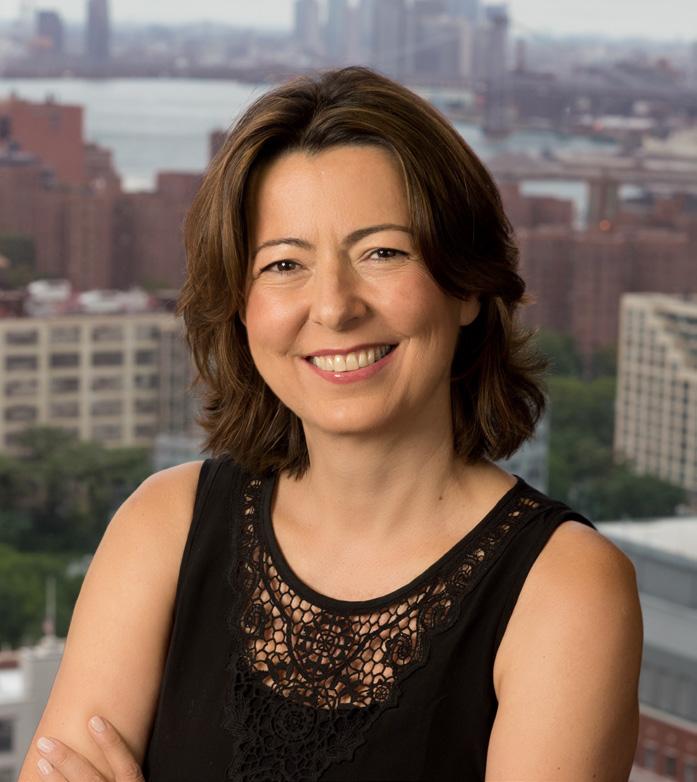
Throughout our history, we’ve celebrated our role in mass-producing penicillin, landing men on the Moon, laying the foundation for 5G and next-generation wireless, and countless other lifealtering accomplishments. Today, we’re still advancing powerful new research and technology, and we’ve taken some important steps to support our researchers in their work.
For example, we’ve launched exciting new initiatives focused on Sustainable Engineering, Artificial Intelligence (AI), and Health Engineering, and we’ve welcomed a new director for our Center for Urban Science + Progress who is rethinking how to bolster fundamental urban science and make the modern city safer, healther, and more livable. He’ll be aided in his mission by faculty members from various disciplines that populate the Center.
Speaking of our faculty, they are truly a force to be reckoned with. Tandon has increased the number of planned faculty positions from 116 to 130, with computer science and biomedical engineering leading the charge in growth.
Ph.D. students are always a source of fresh perspective and innovative thinking, and we recently created a new Ph.D. Hub to provide mentorship and professional development and increased financial support.
I’m pleased by the way we are reengineering the fundamentals of our curriculum and the continued growth of lifelong learning platforms that create entry points for students at all stages of life. We provide the building blocks for ongoing STEM education by engaging with K-12 students; working with traditional in-person cohorts of undergraduate and graduate students here in Brooklyn; offering non-traditional learners and those without STEM backgrounds a chance to explore new avenues; and expanding the
opportunities for graduate and posthigher-education learning with a growing roster of up-to-the-minute digital programs that meet the evolving needs of aspiring and mid-career professionals alike. I like to think that Tandon has a place for everyone, no matter what stage of life, where they’re from, or where they’re going. We are reexamining our advanced degrees to reflect the complexity of societal needs for tech and engineering in the modern era, and are in various stages of planning and launch for a new Build Your Own Master’s option, a practitioner-focused Doctor of Engineering degree, and an urban science Ph.D. concentration.
Putting all our students first is one of our guiding principles, and this year we established the Experiential Learning Center (ELC) to advance immersive and multidisciplinary learning, collaboration, and career-readiness opportunities. We also saw a record number of more than 30 student teams getting handson learning experience in our Vertically Integrated Projects program — an exponential leap from the original four just five years ago.
We also made what we think is a vital change to our educational landscape, officially incorporating ethical engineering into our curriculum, ensuring that students understand how their work can affect society and the importance of leveraging their skills in a way that takes into account equity, fairness, and transparency. They’ll be going out into the world equipped with both the technical skills and the insight to improve it, and I’m extremely optimistic about the contributions they’ll be able to make to their communities.
I have always loved the concept of community, which, of course, means far more than just a specific geographic locale. It’s not enough for us to just work to improve our school community; we’re intent on making a mark on the broader academic community, the city, the nation, and the globe.
We have created the Office of Inclusive Excellence and have encouraged our faculty as they pursue research with a more fair and equitable world in mind. We established a Feminism and STEM minor that gives students a critical understanding of the ways that difference and diversity shape and are shaped by modern science and technology. Both of which have laid the groundwork for us to have an increased number of graduate-level fellows from groups underrepresented in STEM.
I was pleased to be a part of a shared $3 million NSF grant to develop methods of promoting the advancement of tenuretrack engineering faculty from groups not generally represented in STEM academia, and welcomed a new cohort of talented “Faculty First Look” scholars from these underrepresented groups, preparing them to forge academic careers after completing their doctoral studies.
I was also heartened by our response to the war in Ukraine by providing free online summer classes and compensated research opportunities for displaced students.
None of our accomplishments would be possible without a strong institutional foundation, and this year we created a vision for what our campus will look like over the next decade and beyond, which will put us in good standing to tackle new initiatives as they arise and ensure we are constantly on the cutting edge of curriculum, research and discovery.
One of the joys of being the dean of a school like Tandon is being surrounded by engineers — trouble-shooters and problem-solvers by nature. When I consider all they’re capable of, it’s impossible to be anything but optimistic.
Table
1 AI4CE: Automation and Intelligence for Civil Engineering AP: Applied Physics BME: Biomedical Engineering C4D: Cybersecurity for Democracy CATT: Center for Advanced Technology in Telecommunications CBE: Chemical and Biomolecular Engineering CCS: Center for Cybersecurity CSE: Computer Science and Engineering CUE: Civil and Urban Engineering CUSP: Center for Urban Science + Progress DSL: Dynamical Systems Laboratory ECE: Electrical and Computer Engineering FRE: Finance and Risk Engineering IDM: Integrated Design & Media MAE: Mechanical and Aerospace Engineering SEI: Sustainable Engineering Initiative TCS: Technology, Culture, and Society TMI: Technology Management and Innovation VIDA: Visualization Imaging and Data Analysis Center VIP: Vertically Integrated Projects The Future is Bright 3 Resiliency 9 Sustainability 19 Health Engineering 29 Urban Innovation 41 And the winner is . . . 46
of Contents DEPARTMENT, CENTER & LAB KEY

The future is bright
IT WAS A WINNING YEAR FOR TANDON
Whether they’re designing a rocket capable of flying an important payload or building a network of sensors to detect flooding, NYU Tandon students and faculty prove the power of teamwork and collaboration.
STUDENT ACHIEVEMENTS
This year’s InnoVention teams got rewarded for their hustle and vision
InnoVention is a prototyping competition that challenges NYU students from around the globe to prototype and pitch commercially viable ideas for real-world problems. When the dust cleared at the New York-based 2022 competition, winners included:
• Grand Prize recipient Ivy Road, a service that matches international students with highly qualified peer tutors. Developed by Dan Zhang (Tandon ‘25) and Ailin Jia (Gallatin ‘25), it’s a demonstration of engineering students’ ability to work
with their counterparts across NYU to provide essential services to students everywhere..
• EaSEE Bot, a device developed by Bilal Sher (Tandon ‘22) and Beyza Kiper (Tandon ‘25) that helps ensure the safety and efficiency of a building’s exterior by flying around the structure and auto-generating a 3D model using advanced computer vision and AI techniques. EaSEE Bot combines two core elements of Tandon’s areas of research excellence, robotics and urban. EaSEE Bot has also won honors from the U.S. Department of Energy and at the 2021 global edition of InnoVention.

Shooting for the moon
The NASA Student Launch, an annual research-based initiative aimed at designing, building, and flying payloads or vehicle components that advance high-power rocketry, is widely considered the most prestigious student aerospace competition in the nation. Last year, NYU Tandon’s Rogue Aerospace was named the number-two rookie team of 2021 and garnered first place in the Project Review Award category; they were also named the Overall Winner of the Student Launch Design Division. Now, no longer rookies, they proved their mettle among the more than 60 teams at the 2022 competition, garnering the Overall number-two spot in the University Student Launch Initiative Design Division. In addition, the team received the first place AIAA Vehicle Design Award (for the most creative, innovative, and safety-conscious overall rocket design) and the Project Review Award (presented to the team with the best combination of written reviews and formal presentations).

An unsinkable team
In 2022, members of Tandon’s Concrete Canoe team aced the American Society of Civil Engineers (ASCE) Metropolitan Regional Competition, marking the sixth consecutive regional win for the team and setting a new school record. Thanks to that performance, the team headed once more to the nationals, held live at Louisiana Tech University in early June. (It was the first in-person nationals since 2019.) There they had an outstanding finish, placing first in the important category of final product, third in the written design category, and — in a crowded field — placed fifth overall.

Business as usual: another competition, another win for Tandon’s trading teams
Browse the NYU Tandon website and you’ll see numerous headlines that appear similar: “NYU Tandon Team Excels in Prestigious International Trading Competition,” “FRE Trading Teams Shine in Annual University Trading Challenge,” “Finance and Risk Engineering Students Excel at National Financial Trading Competition,” “Tandon Team Trades with the Best of Them.”
The phenomenon can’t be blamed on an unimaginative headline writer. As Professor Ron Slivka (FRE), who has coached Tandon’s trading teams for several years, points out, the department has fielded winning teams in various competitions for the last seven years straight. FRE’s latest triumph occurred
NYU TANDON UNCONVENTIONAL ENGINEER VOL. 34
The Concrete Canoe Team
The Rogue Aerospace Team
at the Eleventh Annual Academic Affiliate Membership Student Competition, organized by the International Association for Quantitative Finance. After submissions had gone through a blind, multilevel selection process and were reviewed by a judging panel comprised of IAQF Board Members, two of the six winning teams hailed from Tandon. While Tandon was the only program with multiple winners, that was not unusual for the school. This was actually the third year in a row FRE placed more than one team in the IAQF winners circle.
RESEARCH ACHIEVEMENTS
Million dollar ideas
Tandon researchers are producing big ideas, with big funding to back it up. Multiple projects from our researchers received grants worth over a million dollars, including:
An earthshaking accomplishment
The Federal Emergency Management Agency estimates that earthquake losses in the U.S. add up to more than $4 billion a year. Around the world, some 20,000 people are killed annually when tectonic plates in the Earth’s crust shift, and the resulting seismic waves wreak havoc.
NYU Tandon is helping educate the next generation of earthquake engineers — those able to analyze the potential consequences of strong earthquakes and design and build structures that can withstand seismic effects as much as possible — and this year, a group of students from the NYU Tandon Seismic Design Team took part in the Earthquake Engineering Research Institute’s Annual Undergraduate Seismic Design Competition. Students were charged with creating a scaled balsa wood model of a proposed building design using laser cutting and 3D printing, and bringing it to the competition, where it would be subjected to intensive testing on the shake table.
Despite being at their very first in-person competition — and despite going head-to-head with several teams comprising dozens of students — the fledgling Tandon team landed in fifth place among U.S. universities and 11th on the global stage against schools in Romania, Indonesia, Egypt, Canada, and elsewhere.

• $4 million for FloodNet, a collaborative project that seeks to install flood sensors across New York City in order to build an early warning system for those in harm’s way (see page 24).
• $5 million from DARPA awarded to VIDA to develop an artificial intelligence (AI) “virtual assistant” providing just-in-time visual and audio feedback to help with task execution.
• $2.5 million for the launch of a New York-based Offshore Wind Innovation Hub that will facilitate partnerships with start-ups that bring new technological solutions to the rapidly growing US offshore wind industry. It represents a partnership between power company Equinor and the NYU Tandon Future Labs.
• $2.5 million in National Science Foundation (NSF) grants to several teams of wireless researchers, whose projects will focus on making current and future wireless infrastructure, software and hardware systems more resilient to flaws, accidents, subterfuge and hacks (See page 11).
• $2 million from the NSF to create and grow the use of dataintensive technologies in healthcare, including telehealth and AI based tools.The project will help modernize healthcare systems and improve outcomes for patients (see page 31)
• $1 million dollars to develop a database search engine to help experts to weed through the vast amount of publicly available information to discover datasets that are needed for their specific applications.
5
The Seismic
Design Team
OUR NEWEST FACULTY MEMBERS







We take great pride in being a school whose faculty has included such luminaries as the “Father of Polymer Science” Herman Mark and microwave pioneer Ernst Weber. We take equal pride in our current faculty members, who are making notable strides in a wide variety of cutting-edge fields, including wireless communications, protein engineering, and clean energy. This year they will be joined by one of the largest groups of new incoming faculty in recent memory — teaching and researching in areas from environmental engineering to AI and beyond — and poised to contribute to the Tandon legacy in their own ways.

NYU TANDON UNCONVENTIONAL ENGINEER VOL. 36
Kaitlyn Hanley
Amine Mohamed Aboussalah
Tracy Jo Ingram
Joshua Bennett
André J. Butler
Rebecca Delker
Mukhtara
Ayọtẹjú Adékúnbi
Yusuf
Graham Dove









7
Sven Haverkamp
Magdalena Fuentes
Omar Wani
Jabril Bensedrine
Irene de Lázaro
Michael Krone
Daniel Vignon
Nikita Grigoryev
Nialah Wilson-Small

Resiliency
BUILDING AN OPTIMISTIC FUTURE BY PREPARING FOR THE WORST

Whether they’re designing urban infrastructure able to withstand extreme climate events or online systems robust enough to meet ever-increasing challenges, Tandon researchers consider resiliency to be at the core of their work.
Joining forces to train a new generation of cybersecurity and resiliency experts
The quantity, velocity, and variety of cybersecurity attacks worldwide reflect the proliferation of connected devices; advances in extended reality systems, AI, telecommunications; and global supply chains powered by the Internet. At the same time, firms around the world are focused on enhancing their resiliency capabilities to effectively respond to and recover from disruptive events, including cybersecurity incidents and events related to supply chain, third-party providers, applications, and platforms.
Today, there is a shortfall of cybersecurity and resiliency experts with real-world training and immersion in cutting-edge research and technology to face these challenges. Working together, CCS and the Depository Trust & Clearing Corporation (DTCC), a financial services industry giant with nearly five decades of technology, resiliency and cybersecurity expertise, aim to change that.
With leadership from Professor Nasir Memon (CSE, co-founder of CCS, and Vice Dean for Student and Academic Affairs, Tandon Online) and Senior Director Joel Caminer (CCS), the groups are collaborating to enhance the center’s reputation as a hub of thought leadership, attracting world-class researchers and producing a new generation of cybersecurity and resiliency experts, with a special focus on designs, solutions, and technologies for making systems more resilient to ever-evolving threats.
The partnership will be built on three pillars — research, education & workforce development, and dissemination & outreach — and aims to expand the pool of Ph.D. students researching cybersecurity and resiliency at Tandon. It will also design and develop resiliency curricula at the undergraduate and graduate levels and generate academic/industry/government collaborations and events to amplify the work being done at the center.
9
TANDON RESEARCHERS ARE EXPOSING THE FLAWS UNDERWRITING AI-GENERATED CODE
Last year, GitHub — a Microsoft subsidiary that provides tools for coders — released an early version of its newest tool, Copilot. The program provides a way to generate code automatically, using the user’s own code as a kind of guiding light — drastically reducing the amount of time programmers would spend doing laborious coding.
However, Research Assistant Professor Hammond Pearce (ECE, CCS) found that the code produced by Copilot could be surprisingly buggy. Working with Professor Ramesh Karri (ECE and co-founder and co-chair of CCS), Assistant Professor Brendan Dolan-Gavitt (CSE, CCS), and Ph.D. student Baleegh Ahmad, he created 89 security-themed scenarios for Copilot to craft code for, resulting in 1,689 programs. When the researchers analyzed the results, they found that 40 percent were faulty in some way, leaving potential infiltration points for hackers and bad actors and potentially exposing things like passwords and other vital data.
“If you have someone who is not security-conscious writing, this tool may reinforce that tendency and help them write code that introduces even more errors,” says Dolan-Gavitt. “It can have a multiplication effect.”
Their paper, “Asleep at the Keyboard? Assessing the Security of GitHub Copilot’s Code,” was highly cited, and was selected to receive a Distinguished Paper Award at this year’s IEEE Symposium on Security and Privacy, the most important cybersecurity convention in the world.
Better next-G wireless telecommunications
Lightning-fast, low-latency wireless, from 5G to 6G and beyond, will enable such services as virtual and augmented reality streaming, vehicle-to-cloud communications to help self-driving cars navigate in real time, remote surgery, coordination of automated systems in factories and other facilities, and a plethora of futuristic consumer apps. But it will also open a Pandora’s box of security vulnerabilities in the hardware serving as its backbone and software driving its networks.
The NSF Resilient and Intelligent Next Generation Systems (RINGS) initiative has awarded three teams of researchers at NYU Tandon a combined $2.5 million to confront these challenges head on.
Together, the projects — being undertaken at NYU WIRELESS, CCS, and CATT — will focus on making current and future wireless infrastructure, software and hardware systems more resilient to flaws, accidents, subterfuge and hacks.

Among the teams’ research priorities:
• Flagging so-called hardware Trojans (malicious additions to hardware components supplied by a third party in order to launch an attack from within a network node, such as a cellular base station), making it easier to detect jamming and multi-user attacks, and developing a novel evaluation platform for exploring hardware security methods at different regions of the radio spectrum.
• Building more resilient edge networks (those in which computation and data storage capabilities are as close as possible to the source of a request), thereby enabling secure, robust, and high-performance applications in education, business, transportation, healthcare, entertainment and more.
• Ensuring the resilient delivery of real-time interactive services over NextG computer-rich mobile networks, making it possible to improve automation schemes for smart factories and farms, among other settings, as well as enhanced augmented/virtual reality.
Tandon students on multiple wireless devices during a lecture in Fall 2022.
10
A more powerful power grid
U.S. power systems represent an increasingly desirable target for cyber hackers. An IBM report noted that “the energy industry was the third most targeted sector for such attacks in 2020, behind only finance and manufacturing.” To address this issue, the U.S. Department of Energy awarded NYU Tandon a three-year, ~$2 million grant to develop a new program for identifying and addressing vulnerabilities

in power grids. Dubbed Tracking Real Time Anomalies in Power Systems, or TRAPS, the NYU initiative will be a collaborative effort with researchers at SRI International, the New York Power Authority, Narf Industries, and Consolidated Edison. NYU’s efforts will be overseen by Professor Farshad Khorrami (ECE), with Professor Ramesh Karri (ECE, CCS) and Research Scientist Prashanth Krishnamurthy (ECE) as co-investigators.

In announcing the awards, U.S. Secretary of Energy Jennifer Granholm notes that, “investing in cutting-edge cyber security technology keeps us at the forefront of global innovation and protects America’s power grid in the face of increasing cyber threats from abroad.” She adds, “This funding will bolster our commitment to a secure and resilient clean energy future by fortifying American electricity systems and building a stronger grid.”

11
Ramesh Karri
Farshad Khorrami
Tandon researchers received a $2M Department of Energy grant to secure the power grid.
A decade of connection
NYU WIRELESS, an innovative academic research center with a focus on 6G and beyond, was launched in 2012, by Founding Director and Professor Theodore

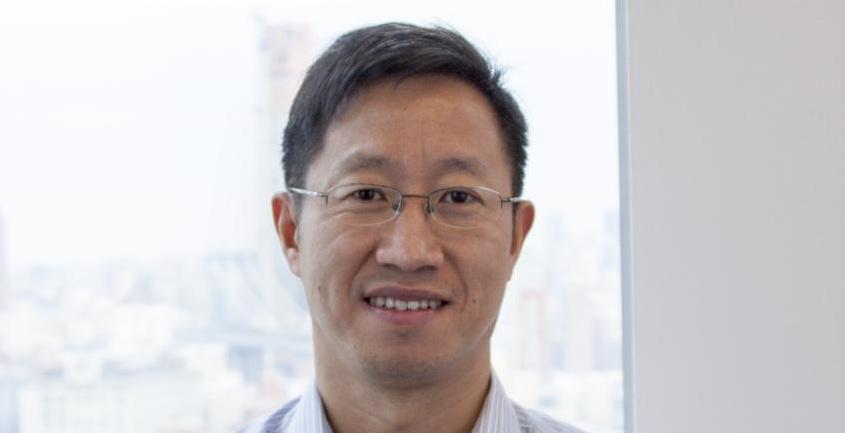
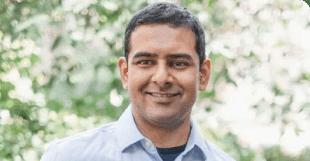
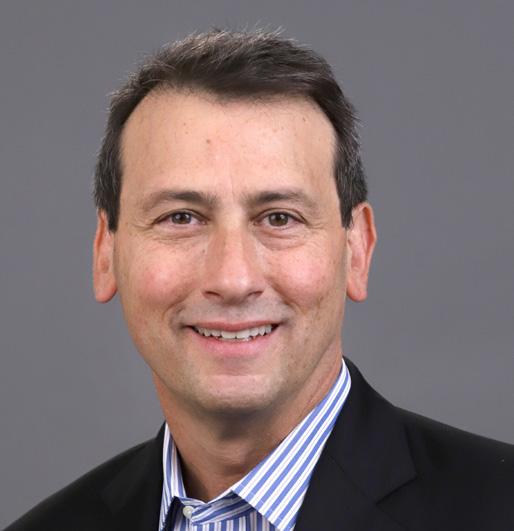

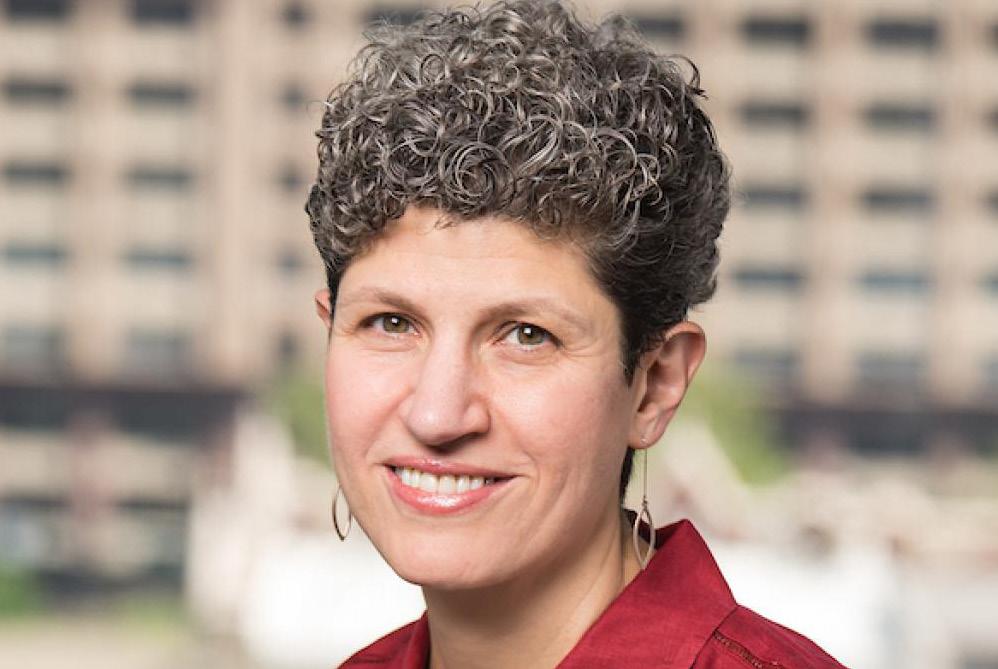

“Ted” Rappaport (ECE, Courant, and the NYU School of Medicine), who pioneered the use of the millimeter-wave (mmWave) spectrum, paving the way for the powerful cell phones and other wireless devices most of us now use.

The world’s first academic research center to combine engineering, computer science, and medicine, NYU WIRELESS is now under the direction of Distinguished Industry Professor Thomas Marzetta (ECE), who led the development of massive MIMO (multipleinput multiple-output), another core component of modern wireless networks.
Along with their fellow NYU WIRELESS researchers, the two, who were so instrumental in enabling 5G, are now exploring new parts of the radio spectrum, developing new technologies, forging new partnerships, and turning their attention to the next generation of mobile communications. They predict a time when autonomous vehicles communicate seamlessly with one another, remote medical devices allow a surgeon to treat a patient on the other side of the world, and wireless signals can be sent at the rate of human computation. Meanwhile, as they look ahead, in honor of NYU WIRELESS’s 10th anniversary, we’re taking a look back.
NYU TANDON UNCONVENTIONAL ENGINEER VOL. 312
NYU WIRELESS celebrates 10 years of advancing wireless communications.
Theodore Rappaport
Elza Erkip
Thomas Marzetta
Sundeep Rangan
Lakshmi Subramanian
Yong Liu
Michael Knox
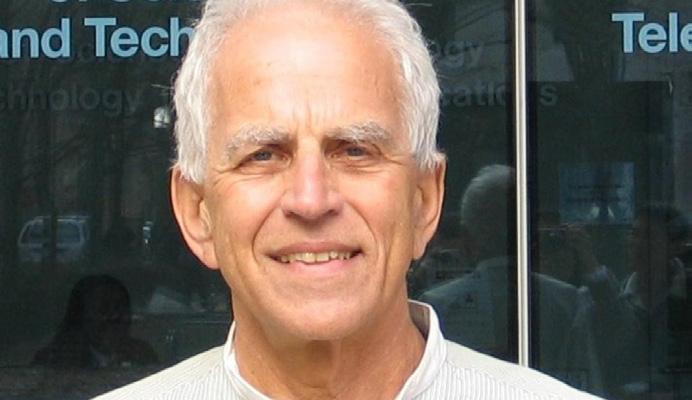


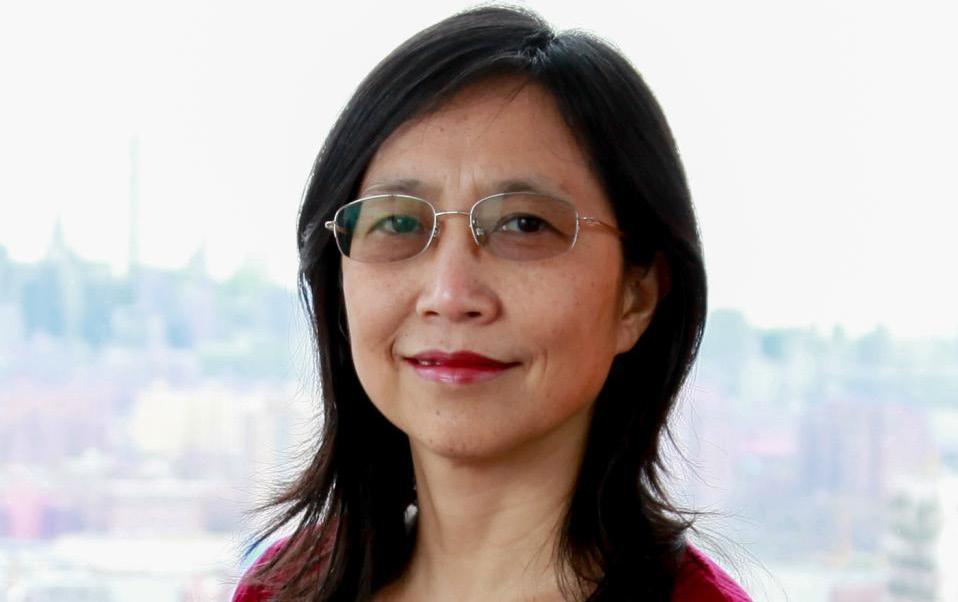
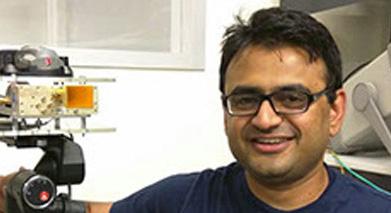



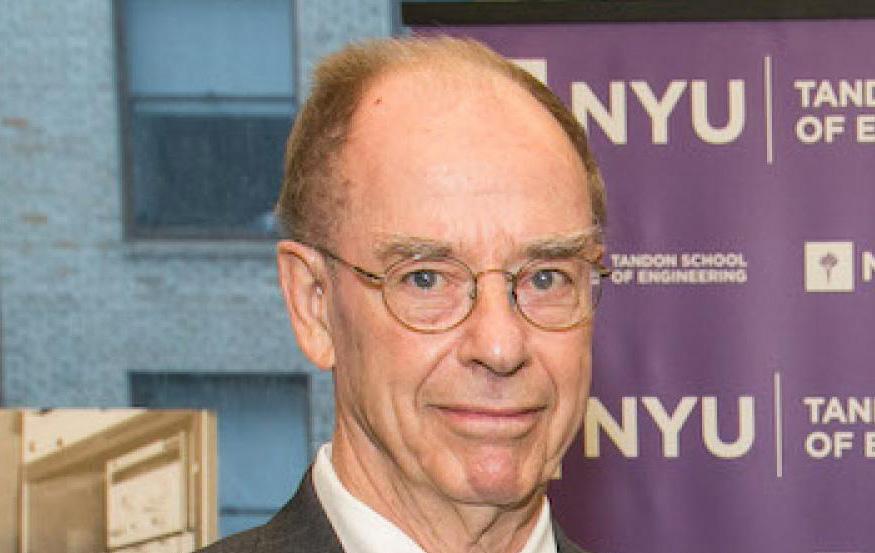
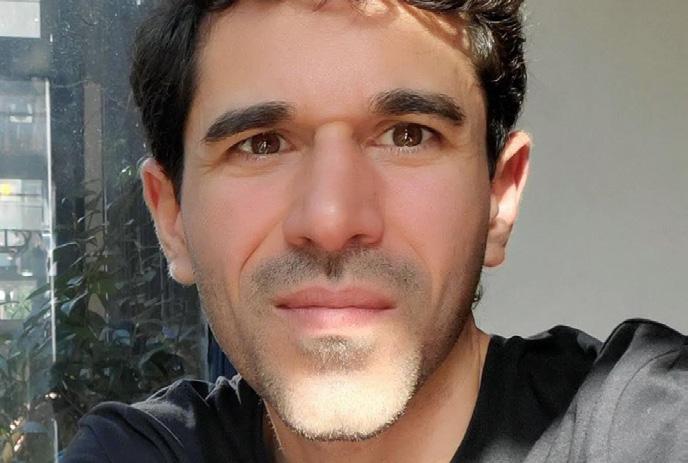
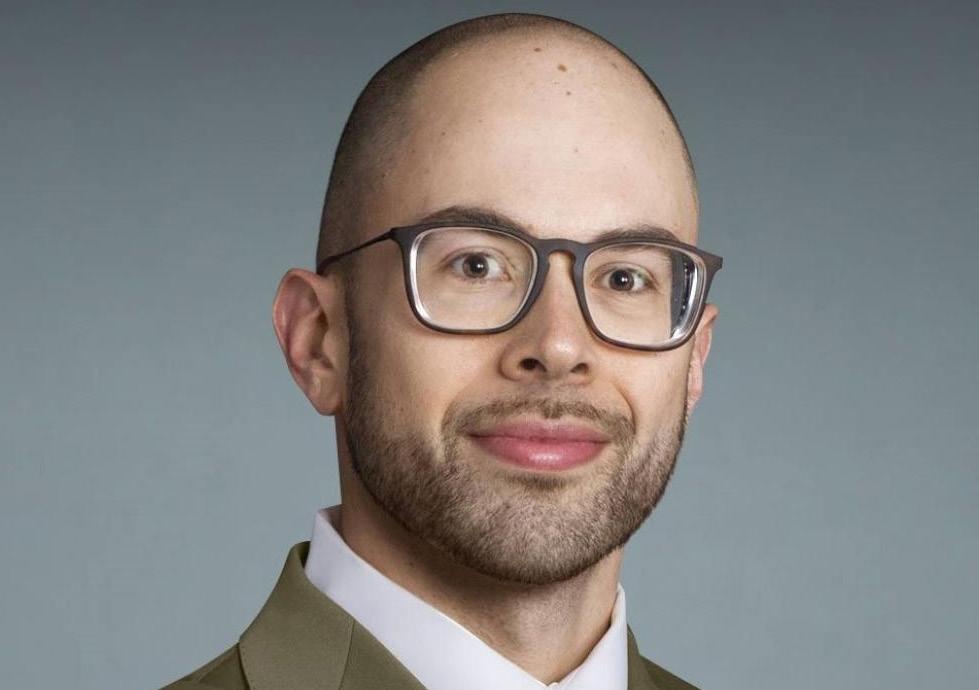

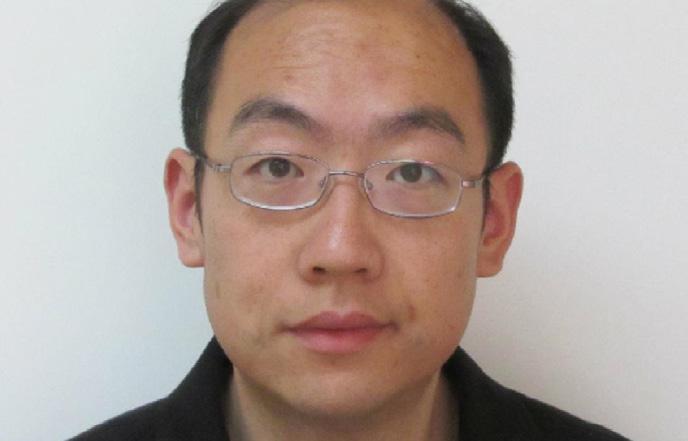
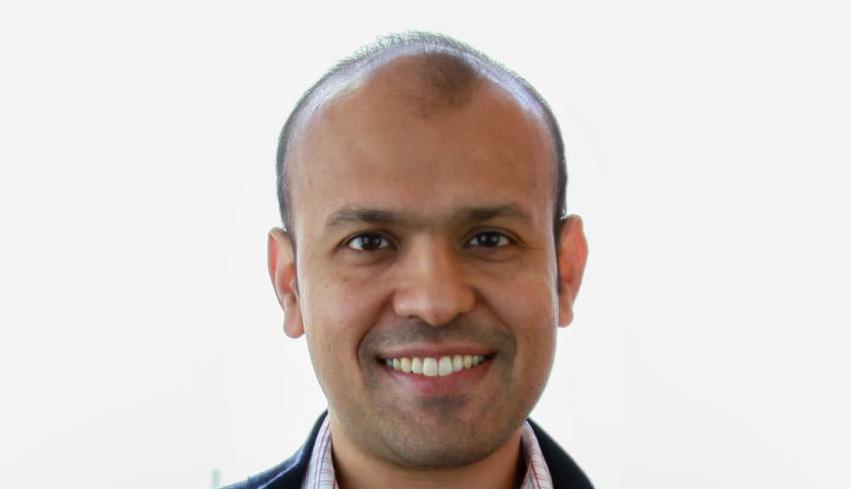
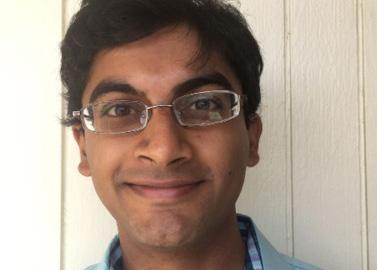
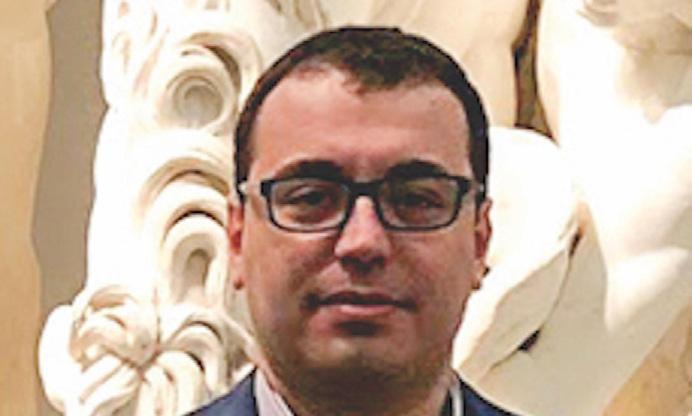


13
David Goodman
Davood Shahrjerdi
Shivendra Panwar
Yao Wang
Dennis Shasha
Fraida Fund
Jaime Llorca
Pei Liu
Aditya Dhananjay
Henry Bertoni
Antonia Tulino
Marwa Chafii
Sundar Aditya
Siddharth Garg
John-Ross Rizzo
Marco Mezzavilla
Giuseppe Loianno
S. Farokh Atashzar
5 reasons to celebrate 10
years of NYU WIRELESS
1Research
• NYU WIRELESS researchers develop a technology, streamloading, that could ultimately make spotty streaming and data hogging downloads a thing of the past (2013)
• NYU WIRELESS researchers receive the IEEE Donald G. Fink Award for the seminal paper “Millimeter Wave Mobile Communications for 5G Cellular: It Will Work” (2015)
• NYU WIRELESS releases a groundbreaking new NYUSIM Channel Simulator that provides a complete statistical channel model and simulation code with an easy-to-use interface for generating realistic spatial and temporal wideband channel impulse responses (2016)
• Research shows real potential for the mmWave band in rural areas, with waves traveling more than 10 kilometers (2016)
• The Federal Communications Commission grants NYU WIRELESS an early “Program Experimental License” for cutting-edge work throughout the radio spectrum (2017)
• Researchers at CATT and NYU WIRELESS build the world’s first wireless emulator suitable for 5G systems that feature massive bandwidths and hundreds of antenna elements (2017)
• NYU WIRELESS researchers help unveil new ways of enhancing the performance of electrochemical micro-sensors — a discovery that could lead to the detection of biomolecules, such as dopamine, at lower concentrations than is possible today (2021)
2 Collaboration and Community
• Nokia and NYU WIRELESS bring the first-ever 5G Summit, now one of the premiere annual events in the wireless world, to Brooklyn (2014)
• Ted Rappaport keynotes a major Federal Communications Commission hearing on mmWaves at the Workshop on Spectrum Frontiers and Technological Developments (2016) and is appointed to serve on the Commission’s Technological Advisory Council (2019)
• NYU WIRELESS is chosen by an NSF and industry consortium to participate in the “Platforms for Advanced Wireless Research” program, with the aim of testing new ways of boosting internet speeds to support dataintensive applications in robotics, immersive virtual reality, and traffic safety. The result is a project called COSMOS (Cloud Enhanced Open Software-Defined Mobile Wireless Testbed for City-Scale Deployment), which allowed researchers to explore wide-ranging applications, including connected vehicles, in a dense, urban area (2018)
NYU TANDON UNCONVENTIONAL ENGINEER VOL. 314
• NYU WIRELESS is selected to participate in ComSenTer, a collaboration among the Defense Advanced Research Projects Agency (DARPA) and industry partners (2018)
• NYU WIRELESS participates in the Next Generation Mobile Networks Alliance, making NYU Tandon the only U.S.-based university member (2018)
• NYU WIRELESS becomes the first academic institution to join the mmWave Coalition, whose mission is to advocate for the use of radio frequencies above 95 GHz in the U.S. (2018)
3
Leadership
Distinguished Industry Professor Thomas Marzetta (ECE and Director of NYU WIRELESS)
• is honored by the Institute of Electrical and Electronics Engineers Communications Society with its Industrial Innovation Award for “originating the concept of Massive MIMO, and for sustained contributions to the development and promotion of that technology” (2017)
• is elected to the National Academy of Engineering (2020)
Founding Director and Professor Theodore “Ted” Rappaport (ECE, Courant, and the NYU School of Medicine)
• is elected as a Fellow of the National Academy of Inventors (2018)
• becomes the first-ever career academic elected to the Wireless Hall of Fame (2019)
• is elected to the National Academy of Engineering (2021)
Professor Yong Liu (ECE)
• Is named a Fellow of the Institute of Electrical and Electronics Engineers (2017)
Professor Shivendra Panwar (ECE and Director of CATT)
• Is honored by IIT Kanpur with their Distinguished Services Award
Faculty Accomplishments Institute Professor Elza Erkip (ECE)
• is listed among the “World’s Most Influential Scientific Minds” by Thomson Reuters (2014)
4 5
Professor Dennis Shasha (Courant and Associate Director of NYU WIRELESS)
• is named an Association for Computing Machinery Fellow for his technical and literary contributions to the field of data management (2014)
• is recognized by the Women in Communications Engineering Standing Committee for her outstanding technical work in the field of communications engineering, and for having achieved a high degree of visibility in the field (2016)
• is elected president of the Institute of Electrical and Electronics Engineers Information Theory Society (2018)
• wins the Technical Achievement Award from the Institute of Electrical and Electronics Engineers Communications Society (2019)
• wins the Edwin Howard Armstrong Achievement Award (2021)
Professor Sundeep Rangan (ECE and Associate Director of NYU WIRELESS)
• is named a Fellow of the Institute of Electrical and Electronics Engineers (2015)
• wins the Signal Processing Society Donald G. Fink Overview Paper Award (2020)
Grants and Funding
• The NSF, Empire State Development, and corporate backers award NYU WIRELESS $2M to develop a 5G network (2012)
• National Instruments donates nearly $1 million in hardware and software to NYU WIRELESS to accelerate 5G research (2017)
• NYU WIRELESS is awarded a $2.3 million contract with the National Institute of Standards and Technology to work on mmWave communications for public safety, as part of an initiative aimed at advancing broadband technologies for first responders (2017)
• Keysight donates the largest in-kind gift to NYU WIRELESS and Tandon in the history of the School (2018)
15
Battling conspiracy theories
In a first-of-its-kind study, C4D researchers have also found that YouTube channels with conspiracy content are fertile ground for predatory advertisers–with conspiracy channels having nearly 11 times the prevalence of likely predatory or deceptive ads when compared to mainstream YouTube channels and being twice as likely to feature non-advertising ways to monetize content, such as donation links for Patreon, GoFundMe and PayPal.
Researchers also discovered that:
•Certain scams were more common. Self-improvement ads, many of them get-rich-quick schemes, were seen more frequently vs. mainstream content. So were lifestyle, health and insurance ads — including two advertisers unique to conspiracy channels that were generating leads for insurance scammers. Ads promoting questionable products were also common, such as a supplement that claimed to cure Type 2 diabetes.
• Affiliate marketing was a constant. Among those marketing low-quality products. For example, almost 95
percent used some form of affiliate marketing.
• Videos with ads got far more views. In the conspiracy channels, monetized videos had almost four times as many views as demonetized ones. Since YouTube’s business model relies on advertising, this may be because its recommender algorithm prioritizes videos that contain ads.
• Content pointed to alternative social media sites. Sites like Gab, Parler and Telegram were mentioned more commonly in conspiracy channels than in mainstream ones; Facebook and Twitter were also frequently referenced.
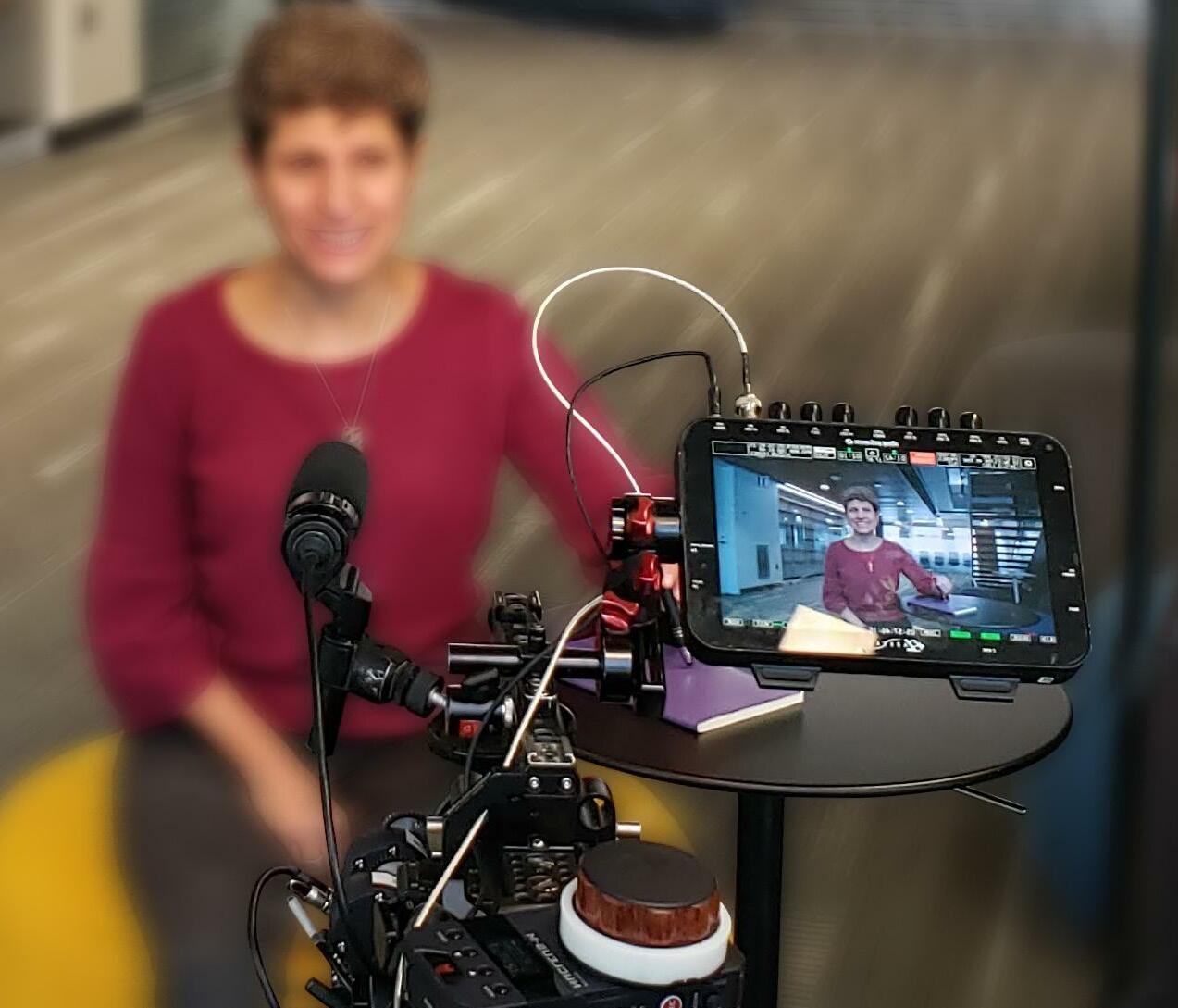
NYU TANDON UNCONVENTIONAL ENGINEER VOL. 316
Tandon researchers work to bring clarity to the fore
Informed citizens and a stronger democracy
Recent challenges to our political system have shown us the importance of defending democracy against misinformation and disinformation. To that end, Tandon researchers developed Ad Observatory, a free, public research tool, available in English and Spanish, that made paid messaging across Facebook and Instagram more transparent.
They launched a new, enhanced version of the tool — AdObservatory.org — ahead of the U.S. midterm elections, which involved some $1.2 billion in digital political spending. The new dashboard
“
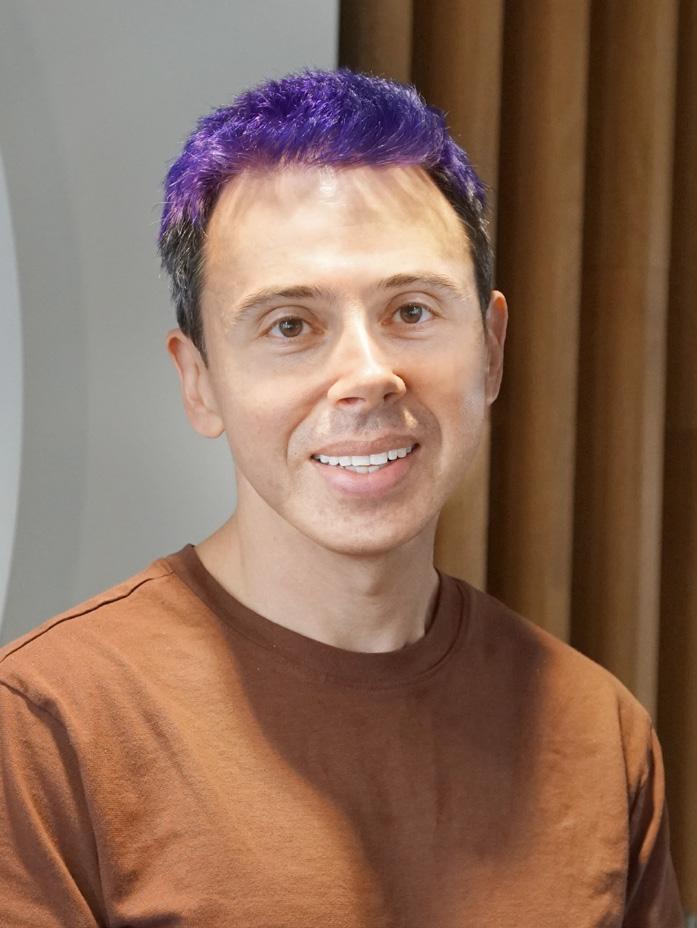
provides journalists and researchers with the ability to search digital political ad spending across Meta (formerly Facebook) properties, see visualizations of spending patterns, and search topics such as abortion, guns, and immigration.
“The lack of transparency on political advertising on Meta and other digital platforms means that the public is vulnerable in ways that we don’t even understand sufficiently,” said the C4D co-director, Associate Professor Damon McCoy (CSE, CCS). “With Ad Observatory we’re shining some light in corners so that researchers and journalists can find these weak spots and suggest ways to make online spaces safer.”
17
Damon McCoy
The lack of transparency on political advertising on Meta and other digital platforms means that the public is vulnerable in ways that we don’t even understand sufficiently.
-
Damon McCoy
”

Sustainability
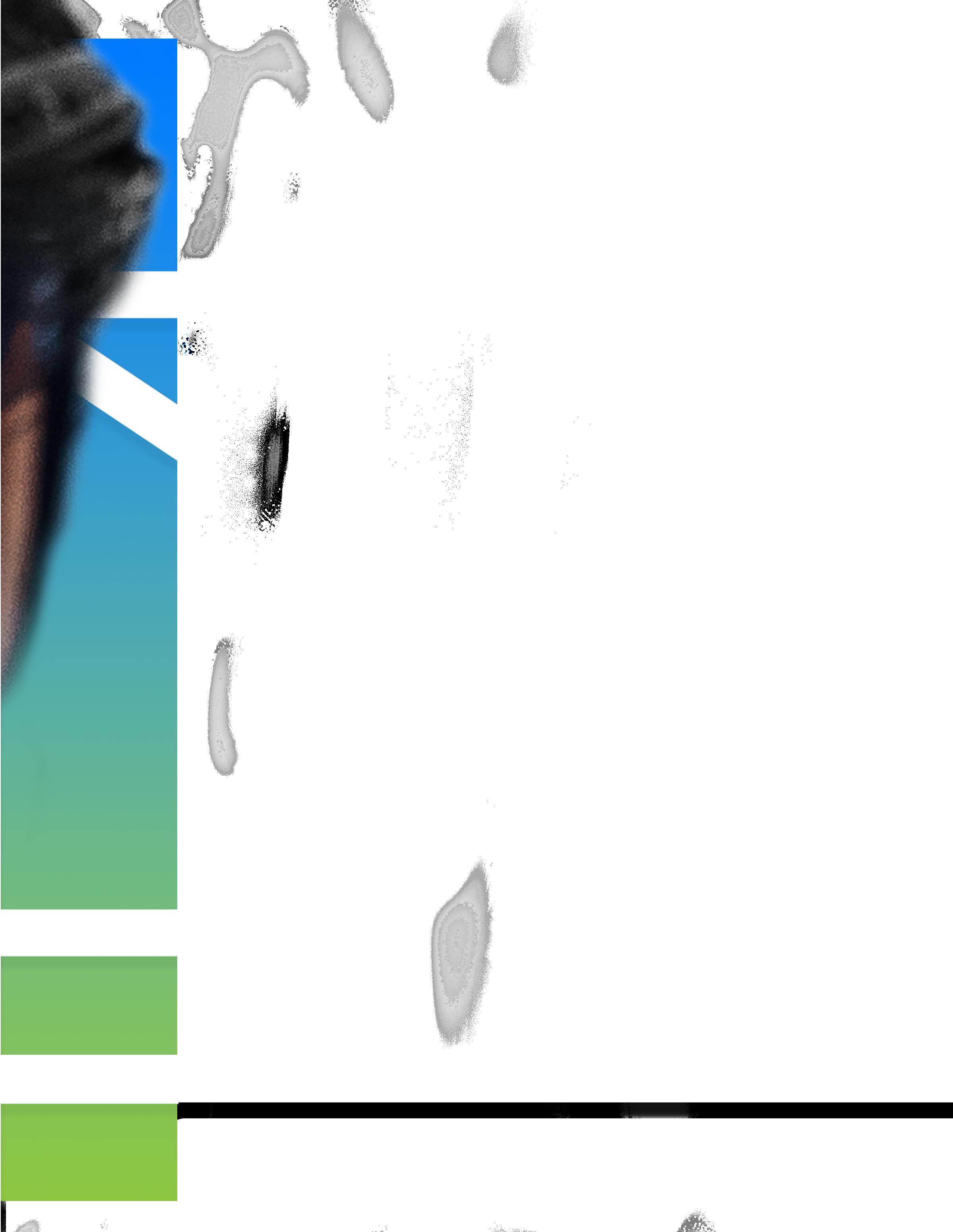
SECURING THE PLANET FOR FUTURE GENERATIONS
In February 2022, the Sustainable Engineering Initiative at NYU Tandon was founded. The initiative, directed by Associate Professor Miguel Modestino (CBE), is devoted to developing comprehensive and tangible engineering methods of addressing the vast array of environmental challenges now facing the world.
The initiative’s researchers, who include faculty across multiple departments, will be focused on a framework they call AMRAd: avoiding emissions and pollutants whenever possible; mitigating them when total avoidance isn’t possible; remediating in cases where mitigation is insufficient, such as when dealing with situations that developed before 1970s-era environmental protections were put into place; and, finally, developing engineering adaptations to situations beyond human control, such as when localized flooding occurs, almost inevitably carrying contaminants.
Modestino and the other researchers involved will be applying the framework to a variety of areas, such as clean transportation, industrial decarbonization, efficient and resilient power grids, disaster risk analysis, environmental justice, and others. This initiative is a direct result of Dean Jelena Kovačević’s strategic plan, which focuses on areas of research rather than siloed departments.
Modestino is joined in the initiative by more than 20 other researchers, spanning departments and centers across the school.
“The cumulative scientific evidence is unequivocal: Climate change is a threat to human well-being and planetary health.”
– UN Intergovernmental Panel on Climate Change
“Climate change is the existential threat to humanity. Unchecked, it is going to actually bake this planet. This is not hyperbole. It’s real. And we have a moral obligation.”
– U.S. President Joe Biden
André Taylor receives DOE Solar Energy Technology Office Award

Professor André Taylor (CBE, SEI) was selected to receive a $300,000 award from the U.S. Department of Energy Solar Energy Technologies Office (SETO) to advance solar photovoltaics research and development to help eliminate carbon dioxide emissions from the energy sector.

Taylor’s project, “Passivated and Conductive Back Contacts for Bifacial Cadmium-Telluride PV,” will generate novel approaches to fabricating next-generation cadmium-telluride (CdTe) solar cells using two-dimensional nanomaterials that are highly conductive and can be used as transparent contacts. The process will enable the use of low-cost processing techniques, like spraycoating and slot-die coating; their tunable surface properties could lead to higher-efficiency CdTe PV.
“Among the industry problems this work addresses is the issue of the back contact, which affects performance. The question is, how do you find a material with ideal performance with CdTe systems? We think these 2D nanomaterials confer that kind of performance,” said Taylor.
He added that the novel element of his work will be the use of these nanomaterials in concert with CdTe. “We have been working on both the techniques and materials to extend this work,” he said.
HARNESS THE SUN
Shifting the sun
Solar cells are a key feature of creating a sustainable energy ecosystem for the future. Existing solar arrays and cells can produce clean energy from the most abundant source in nature. But increasing their efficiencies while lowering cost to replace coal and gas as energy sources still requires technological advancements — advancements that we need sooner rather than later.
Now, a team of researchers led by Professor and Chair Eray Aydil (CBE), is tackling one facet of solar cells’ inefficiency — the nature of light itself.
The issue with silicon solar cells is that they are not the best match for the solar spectrum. Only certain wavelengths can be efficiently utilized with existing cells. For example, ultraviolet and blue light aren’t converted to electrical power as well as infrared light. This means that a great deal of the potential energy that could be captured is wasted.
The solution Tandon researchers came up with involved, essentially, “Changing the sun,” according to Aydil. They developed a film that can be used in the solar cells to shift the light spectrum, turning ultraviolet and blue light (from the less efficient band of the spectrum) into near-infrared light (the more efficient source for solar cells).
Changing the light spectrum has other benefits to the cells. UV rays can cause the cells to degrade more quickly, which would require them to be replaced more frequently, increasing the cost of electricity. UV rays can also cause overheating due to the excess energy they carry, decreasing their efficiency and contributing to their premature degradation. By shifting these rays into the near-infrared part of the spectrum, the new film can solve multiple issues with a single fix.
André Taylor
Tandon researchers developed a film for solar cells that shifts the light spectrum by up to 95 percent to increase efficiency.
Surf the web on solar lightwaves
To address the climate emergency, the U.S. needs to make an unprecedented energy transition across all sectors. This has implications for systems that we take for granted, even those of the internet or “the cloud.” The energy demands of the cloud are perhaps less obvious than those of other systems of infrastructure. After all, the shiny digital interfaces we interact with daily mask a backend of massive data centers and sprawling transmission networks — and where the energy requirements of these infrastructures, as well as the devices and systems connected to them, are responsible for greenhouse gas emissions equal to that of the global airline industry. The energy demand of the Internet is growing rapidly, especially with the expansion of computational approaches like blockchain and AI. The carbon footprint of a single Ethereum, proof-of-work transaction is equivalent to nearly 329,000 credit card transactions, and the training of a neural network uses more energy than five cars across their entire lifetimes.
A new project, Solar Protocol, developed by a team of Tandon researchers, spotlights how the transglobal trafficking of data through the web is a major consumer of energy and driver of climate change, as well as explores possible responses.

Developed by Industry Associate Professor Tega Brain (IDM, SEI); Industry Associate Professor Benedetta Piantella (IDM, CUSP); and Adjunct Professor Alex Nathanson (IDM), Solar Protocol comprises a web platform hosted across a network of solar-powered servers, set up and maintained by volunteers around the world. The project demonstrates what the team calls “energy-centered design,” an approach to UX design that foregrounds the carbon implications of digital experiences and that prompts designers to consider these effects as a key part of the design process. Designers are highly innovative and are well positioned to respond creatively to constraints like the need to make web experiences light-weight and with low data requirements.
As a workable system that spans the planet, Solar Protocol also investigates the politics of the web and different ways to route web traffic. In stark contrast to large-scale, high-volume web services that algorithmically direct network traffic to whichever server gives the quickest response time, usually the closest geographically, Solar Protocol uses the distribution of solar energy across the planet to determine where to send web traffic in the network. By sending web traffic to whichever server is in the most sun at the time, the system is also dynamically moving the computational work required to generate and send the website, to the place where there is the most naturally available energy. In this way, the sun becomes the “logic” used to automate decisions in the digital network.
By considering the energy demands of the whole computational stack, from hardware to software to interface design, Solar Protocol imagines an internet that operates in concert with our shared environmental conditions.
21
Industry Assistant Professor Tega Brain, Industry Associate Professor Benedetta Piantella, and Adjunct Assistant Professor Alex Nathanson (M.S. ‘19)
LEARN FROM THE WATERS
Below the seafloor
A vast amount of the powerful greenhouse gas methane is sequestered as frozen crystals in the world’s oceans. Of great concern among experts is the growing risk that, as the Earth warms and ocean temperatures rise, these highly disruptive, potent greenhouse gasses will ‘flee’ their frozen confinement..
To understand the stability of these crystalline hydrocarbon deposits, Associate Professor Ryan Hartman (CBE) is launching an investigation into how this “fire ice” forms within a medium of sedimentary mineral deposits and remains in solid form under specific pressures and temperatures.

Hartman had previously studied how unusual sea-floor symbiosis between worms and their microbial neighbors keep these deposits under wraps. He discovered that this natural ecosystem involving feather duster worms (Sabellidae, Annelida) and both heat-generating and heat-absorbing bacteria (Archaea) that consume methane enclathrated — or locked into a crystalline structure — by hydrates in
deep marine environments play a key role in maintaining equilibrium that keeps hydrates frozen.
Seeking to examine the influence that subtle temperature fluctuations may have on the dynamic stability of the hydrate deposits, the investigators found that feather duster worms, which thrive around crystalline hydrates, by selectively consuming heat-generating bacteria called methanotrophs that metabolize methane, put the brakes on the potential melting of these crystal structures (releasing trapped methane) due to the microbes’ exothermic metabolism.
The team simulated the ecosystem by solving the associated energy balance and methane hydrate dissociation kinetics. They examined and analyzed the dissociation rate — the rate at which frozen hydrates disassembled into molecular components — and found that the symbiosis established among methanogens (methaneproducing bacteria), methanotrophs, and feather duster worms indeed stabilizes methane hydrates at depths where the crystals are exposed to the ocean and its living organisms.
cavities in a substance whose dimensions can be measured at the nanometer scale. In oceans worldwide, hydrate crystals form within the nanopores of sedimentary materials from the arctic permafrost to a range of deep marine environments.

The heterogeneous materials have profound implications for energy and climate change, particularly in deeper waters, where these structures dominate: while they are vital, energy-rich entities that form spontaneously from water and small hydrophobic molecules under specific temperature and pressure conditions, they also keep highly volatile greenhouse gasses under frozen “lock and key.”
Now, they are exploring gas hydrate crystallization in nanopores — pores or Ryan Hartman
NYU TANDON UNCONVENTIONAL ENGINEER VOL. 322
Tandon researchers are exploring gas hydrate crystallization in nanopores to understand the impact of warming oceans on methane emissions.
The organisms helping clean up a Superfund site

Greenhouse gasses are not the only pollutants that affect the waters, of course. Take one look at the Gowanus Canal, a Superfund site in Brooklyn where the water is so dirty, it is uninhabitable to life. Well, most life. Assistant Professor Elizabeth Hénaff (TCS, SEI, CUSP, C2SMART) has been uncovering a community of extremophiles, a type of microorganism capable of living in extreme conditions that have the ability to break down the pernicious waste, at the bottom of Brooklyn’s Gowanus canal. These microbes reproduce with enormous speed, the ratio of time being 20 years in 20 minutes of our perception.
And these creatures are not just thriving in such an environment — they may be helping to clean it up. If these creatures can eat the industrial waste that makes the canal so inhospitable, then they’re unique biology could be utilized to clean up other waste from polluted bodies of water. Hénaff believes that these extremophiles could hold some secrets to a sustainable solution for severe pollution, and a way to harness evolution for the earth’s benefit.

23
Scientists sampling the Gowanus Canal’s “black mayonnaise.” Photo credit: Matthew Seibert
Researchers Elizabeth Hénaff and Ian Quate during a trip to collect samples. Photo credit: Josh Johnson
Goodbye Stick, Hello Carrot
In a world where the Environmental Protection Agency’s ability to regulate greenhouse gasses has been limited by the supreme court, engineering solutions must be matched with policy solutions.
In an op-ed, Professor Miguel Modestino (CBE and Director of the SEI), gave his advice to the United States’ government to help incentivize industry to convert to sustainable energy, even if they can’t be forced to through law.
“Low profit margins advocate for fossil fuel use in the short-term due to the upfront investment in retrofitting manufacturing plants with new equipment, but in the long term, renewables are poised to confer lasting revenue benefits,” explained Modestino, adding that while the federal government “may not be able to mandate change through regulation, [it] can encourage change through incentives, thus allowing the chemical manufacturing industry to retrofit itself to be more efficient and sustainable through the use of renewable power at scale.”
He suggests a robust program of increased government funding for research, development and demonstrations, and tax rebates or other financial subsidies that could help shift the green revolution forward, even in the face of setbacks. The full article can be found at engineering.nyu. edu/news/goodbye-stick-hellocarrot
Protecting communities from flooding

If polluted water, like that from the Gowanus Canal, rises onto the city streets, it creates a new host of problems. Specifically, the bacteria and microbes that floodwater leaves behind. When Hénaff, Assistant Professor Andrea Silverman (CUE, CUSP, SEI), and Industry Associate Professor Tega Brain (IDM, SEI) set out to study the microbiome of city streets after flooding, seeking to discover how sewage and other contaminants were affecting flood-prone neighborhoods worldwide, they were faced with a dilemma: there was no way to predict when flooding might occur so that they would know where and when to take samples.
The group joined forces with Research Assistant Professor Charlie Mydlarz (CUSP) to design and deploy a series of sensors that would gather data and alert them to the presence of hyper-local flood events. With support from C2SMART, Tandon’s U.S. DOT Tier 1 University Transportation Center, the team collaborated with the Science and Resilience Institute at Jamaica Bay (SRIJB) led by Brooklyn College and the Advanced Science Research Center at the City University of New York (CUNY) to form a consortium called FloodNet. The City of New York has incorporated the network into its own flood resiliency plan and, as Mayor Eric Adams announced on September 1 — the anniversary of Hurricane Ida’s landfall in NYC — FloodNet will expand to 500
 Tandon researchers are part of the FloodNet consortium deploying ultrasonic sensors in low-lying NYC areas prone to hyperlocal flooding.
Miguel Modestino
Tandon researchers are part of the FloodNet consortium deploying ultrasonic sensors in low-lying NYC areas prone to hyperlocal flooding.
Miguel Modestino
24
sensors citywide. It is the first systematic, continuous, and accessible record of regular and catastrophic street-level flood events in the city.

FloodNet sensors can detect flood depths as low as 0.5 inches. Given the hyper-local and distributed nature of urban flooding, the sensors were designed to be affordably built and easy to install to allow deployment of a large, distributed sensor network. Additionally, the sensors are:
• Flexible for multiple use cases and scenarios (not requiring power or connectivity infrastructure)


• Easy to construct with a simple open-source design (allowing community participation in construction and deployment)
• Accessible via open-source firmware, software, and hardware design files publicly available online at a GitHub repository
The consortium has launched a realtime dashboard on its online interface at FloodNet. nyc to integrate, store, and disseminate sensor data and other flood-related data streams (including comments from community members, and tide and rainfall data) to a range of stakeholders, including community members, city agencies, researchers, weather forecasters, and reporters.

25
Tega Brain
Andrea Silverman
Charlie Mydlarz
NYC Mayor Eric Adams holds an ultrasonic sensor at a press conference about the city leveraging data from the growing FloodNet sensor network to power decision-making.
Confronting the Anthropocene
When the Association for Environmental Studies and Sciences (AESS) held its annual conference, with the theme “Hopeful Strategies for the Anthropocene,” a trio from Brooklyn was there to present their work.
The Anthropocene refers to our current geological age — a time when human activity and demands exert a major influence on climate and the environment. With U.N. experts predicting that there may be 11 billion people on the planet by 2100, it’s evident that the world’s scientists, technologists, engineers, and sustainability experts must devise ways to mitigate those human effects.
The AESS — an organization of environmental educators and STEM professionals who value interdisciplinary approaches to research, teaching, and problem-solving — convened its latest conference with that in mind.
Former Industry Assistant Professor Alice Reznickova, whose area of expertise is sustainable urban environments, encouraged
her students to submit proposals for inclusion in the highprofile event, and in late June, three of them headed to Towson, Maryland, not only to hear scholarly presentations on such topics as sustainable food systems and environmental justice but to present their own research.

Christina Curry, who graduated with a B.S. in May and who will be pursuing her graduate degree in Urban Planning at NYU Wagner, presented her Tandon capstone project, a study entitled “The Effects of Vegetal Elements on Perceptions of Safety of Urban Pedestrians.”
“Literature on this topic has been mixed, but even though no definitive conclusions have been drawn yet, we do know that how people perceive an area’s safety will affect how they use public spaces,” she explains. “Because of urban greening trends, I decided to focus on a space’s vegetation. How does it feel when a street is tree-lined? Can the same level of greenery feel comforting by day but threatening by night?”
Curry concluded, after analyzing her survey results, that pedestrians perceive well-lit, active, moderately vegetated
NYU TANDON UNCONVENTIONAL ENGINEER VOL. 326
Undergraduates Sophie Weiss and Dorothy Zhang and recent graduate Christina Curry
areas to be the safest — while overly vegetated and unvegetated settings both contributed to feelings of unease.
“Of course, factors like lighting and whether or not someone is walking unaccompanied are exceptionally important, the presence of vegetation is preferable, and its placement should be considered alongside the other design elements of a site,” she asserts.
Undergraduates Sophie Weiss (TCS) and Dorothy Zhang (CSE) participate in the VIP team Solutions for Sustainable Futures, and their presentation focused on the ways in which multi-semester interdisciplinary programs like VIP can enhance undergraduate education.
Students in the VIP program choose a hands-on project of real-world importance and work on it almost the entirety of their academic careers, earning credit each semester. Because the projects are multidisciplinary, students from all majors can participate, and a motivated person can take on increasingly responsible roles as their school years progress, tracing the trajectory they might take over the course of their professional lives.
Weiss and Zhang’s team currently consists of 24 students pursuing various projects related to sustainability education, food security, waste management, and urban design, and in their presentation, they discussed how an initiative like VIP works, including student recruitment, project selection, and assessment and evaluation. They showcased examples of each of the projects, highlighted the different competencies developed by students, and spoke openly about barriers they had faced.
“Sustainability education is on the rise, and this type of initiative can nurture meaningful connections between students, support interdisciplinary collaborations, promote leadership development, and act as a catalyst to bring a large number of students into real-world sustainability work,” they say.
They were, as their advisor pointed out, the only undergraduates to be invited to present at the conference.
“
27
Sustainability education is on the rise, and [initiatives like VIP] can nurture meaningful connections between students, support interdisciplinary collaborations, promote leadership development, and act as a catalyst to bring a large number of students into real-world sustainability work.
- Sophie Weiss Dorothy Zhang
”
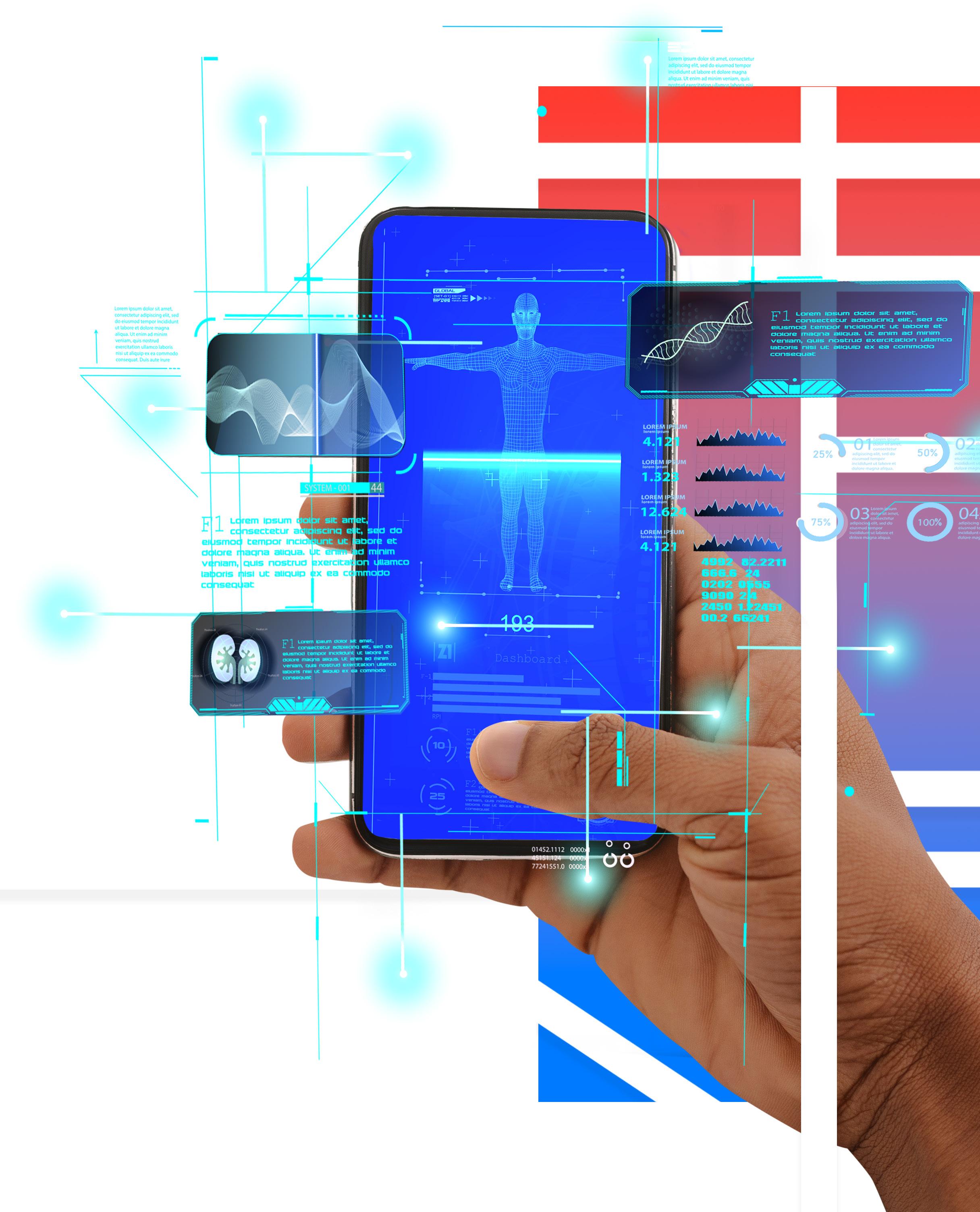
Health Engineering
HEALTHCARE THAT’S SMARTER, FAIRER, & MORE WITHIN REACH
New healthcare solutions require unique vision and constant collaboration. That’s why NYU Tandon is perfectly positioned to change the way we take care of ourselves and each other.

Diagnosis is a cough away
Imagine sometime in the future, you wake up with a tickle in your throat and a stuffy nose. Your first thought might be a twinge of fear — maybe it’s something more serious than a cold, or a contagious disease. But before you call out of work or cancel plans, you might as well check. So you cough into the band of your smart watch. Shortly after, you get your results: negative for Covid, negative for flu, negative for anything nastier than seasonal allergies.
Thanks to a partnership between Tandon’s researchers and Brooklyn biotech company Mirimus, what seems like science fiction is closer than you might think.
The research is led by Professor Elisa Riedo (CBE), Associate Professor Davood Shahrjerdi (ECE and Director of the Nanofabrication Cleanroom), and Dr. Giuseppe Maria de Peppo, Director of Internal Research at Mirimus, Inc.
Riedo is particularly well known for her pioneering work on thermal scanning probe lithography (tSPL), an innovative method to nanofabricate devices and materials with molecular resolution using a heated “nano-chisel.” Recent work in collaboration with Shahrjerdi and de Peppo shows that tSPL can be used for fabricating state of the art electronic circuits with atomically thin materials, as well as to sculpt, in a biocompatible
material, the exact structure of bone tissue, with features smaller than the size of a single protein — a billion times smaller than a meter.
Shahrjerdi’s research focuses on the study of new electronic materials and devices for making nano-engineered integrated systems. Previously, his research led to a new way of enhancing the performance of electrochemical microsensors used in biochemistry for the detection of biomolecules, such as dopamine, at lower concentrations than was previously possible.
Riedo and Shahrjerdi started this partnership with Mirimus at the beginning of this year. Mirimus is a local Brooklyn health biotech company making waves in the medical testing field. The team’s unique combination of expertise in nanoelectronics, nanofabrication and biomedical research makes this team a natural fit for this incredible and exciting challenge.
Now, this new partnership may result in a small, affordable device that can go beyond just testing for COVID-19 and serve as a prototype for an electronic microchip that can be embedded in your watch or smart band, and capable of monitoring a variety of human health threats — resulting in healthier workplaces and communities, and putting you at ease on those days when you wake up feeling a little under the weather.
29
WEARABLE TECH FOR HEALTHIER BODIES AND MINDS
Mental healthcare from your smartwatch
But wearables can do a lot more than tell if you’re physically sick. Associate Professor Rose Faghih ((BME) has been working for the last seven years on a technology that can measure mental activity using electrodermal activity (EDA) — an electrical phenomenon of the skin that is influenced by brain activity related to emotional status. Internal stresses, whether caused by pain, exhaustion, or a particularly packed schedule, can cause changes in the EDA — changes that are directly correlated to mental states.

The overarching goal — a Multimodal Intelligent Noninvasive brain state Decoder for Wearable AdapTive Closed-loop arcHitectures, or MINDWATCH, as Faghih calls it — would act as a way to monitor a wearer’s mental state, and offer nudges that would help them revert back to a more neutral state of mind. For example, if a person was experiencing a particularly severe bout of work-related stress, the MINDWATCH could pick up on this and automatically play some relaxing music.
Now Faghih — along with Rafiul Amin, her former Ph.D. student — has accomplished a crucial task required for monitoring this information. For the first time, they have developed a novel inference engine that can monitor brain activity through the skin in real time with high scalability and accuracy. Previous methods measuring sympathetic nervous system activation through the skin took minutes, which is not practical for wearable devices. While her earlier work focused on inferring brain activity through sweat activation and other factors, the new study additionally models the sweat glands themselves. The model includes a 3D state-space representation of the direct secretion of sweat via pore opening, as well as diffusion followed by corresponding evaporation and reabsorption. This detailed model of the glands provides
exceptional insight into inferring the brain activity.
The broader impact and applications of the methodology includes performance monitoring, mental health monitoring, measuring pain and cognitive stress. Mental health tracking can help better manage autism, post-traumatic stress disorders, excessive irritability, suicidal tendency, and more. Performance tracking and cognitive stress tracking can help improve individual productivity and quality of life.
Her team is now working on ways to incorporate the model into wearables, including the elimination of informational “noise” caused by factors like robust movement and exercise, as well as seeking potential partnerships to design and manufacture the devices that would carry the algorithm.
green shortened that split-second period between the initial appearance of the stimulus and when the eye began moving towards it (known to scientists as the saccade), could drivers benefit from an augmented reality overlay that made every merging vehicle green?
Professor Qi Sun (CSE, CUSP) is collaborating with neuroscientists to find out.

He and his Ph.D. student Budmonde Duinkharjav — along with colleagues from Princeton, the University of North Carolina, and NVIDIA Research — recently authored the paper “Image Features Influence Reaction Time: A Learned Probabilistic Perceptual Model for Saccade Latency,” presenting a model that can be used to predict temporal gaze behavior, particularly saccadic latency, as a function of the statistics of a displayed image. Inspired by neuroscience, the model could ultimately have great implications for highway safety, telemedicine, e-sports, and in any other arena in which AR and VR are leveraged.
As neuroscientists make new discoveries about how the brain works, Sun hopes to bring them to bear in emerging media to unlock real-world benefits. “Think of the brain as a low-powered computer,” Sun says. “We know new technologies have an effect on our cognition and behavior, and we should be harnessing that for the good of society and helping prevent any negative effects.”
A safer reality through virtual reality
Wearables go beyond a wristwatch. They also include the new universe of VR headsets. And now our researchers are using these devices as a potentially life-saving tool.
It’s an everyday scenario: you’re driving down the highway when out of the corner of your eye you spot a car merging into your lane without signaling. How fast can your eyes react to that visual stimulus? Would it make a difference if the offending car were blue instead of green? And if the color
NYU TANDON UNCONVENTIONAL ENGINEER VOL. 330
Rose Faghih
Qi Sun
MORE ACCESSIBLE HEALTHCARE
How will rapidly expanding health telehealth and data-intensive technologies affect the future of healthcare work? A team of NYU researchers from the schools of engineering, medicine and business led by Professor Oded Nov (TMI, CUSP) are conducting a broad investigation into Digital Health Work: how to best bring scalable technologies into the clinic, empowering healthcare workers to take advantage of data-driven research and improve health outcomes for patients.
The problem the team is taking on is the disconnect between healthcare practice that nurses, physician assistants, allied health staff and others are already familiar with, and the ways these practices can be altered by advanced technologies. Particularly challenging are the new reliance on telehealth and patient-driven big data which can burden practitioners who are not used to working with them.
With continued NSF investment, the Tandon-led Digital Health Work research initiative received a $2.5 million National Science Foundation (NSF) grant to address these problems.
“The new grant will help us further develop our NYU-wide research program on digital health work as an interdisciplinary
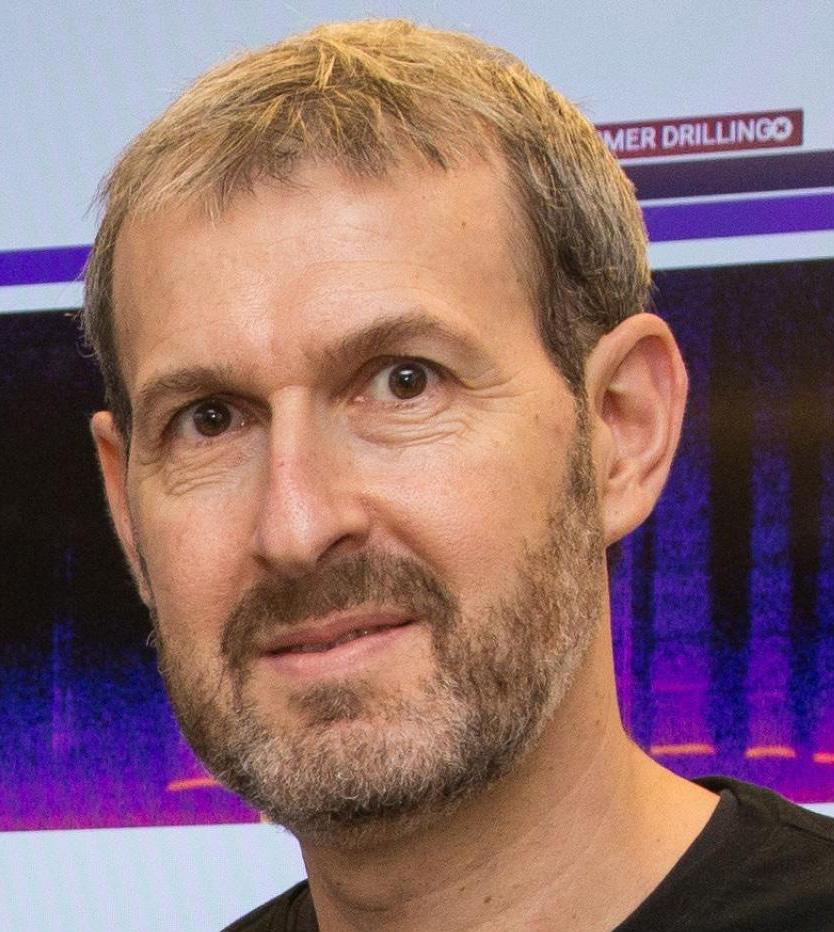
research domain that brings together technological, organizational and medical innovations toward a healthy and resilient society, and an inclusive healthcare workforce,” said Nov. The project’s approach centers on alleviating misalignment between current healthcare work and data-intensive technologies, focusing on three areas:
• Co-developing tools and generalizable design principles with users that lower the barriers to technology integration for healthcare workers
• Empowering individuals within healthcare systems who have diverse roles to adopt and use the tools and improve their skills
• Enabling patient-centered healthcare that promotes autonomy and strengthens clinician-patient concordance
While new technologies are constantly being developed, the hardest part to making sure they work is the “last mile” — a sociotechnical challenge that involves getting the right technologies matched with the right interfaces into the hands of diverse healthcare workers, and creating alignments between workflows, organizations, and technologies.
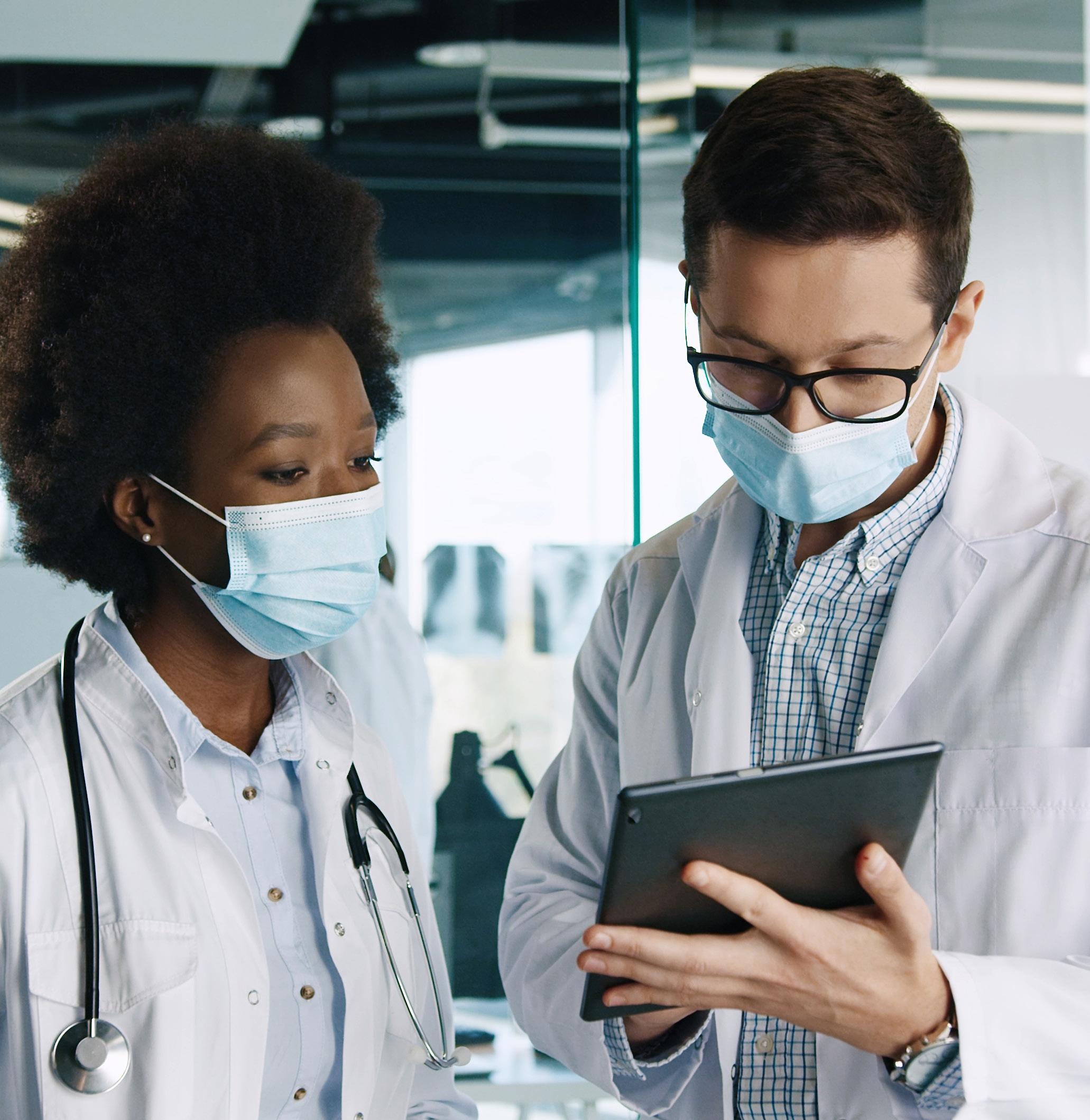
31
Oded Nov
Tandon researchers received a $2.5M NSF grant to investigate data-intensive technologies in healthcare, including AI & telehealth tools.
seen that nature is able to build remarkably complex structures. We’re using the same building blocks as nature to
new
BUILDING BETTER TREATMENT THROUGH BIOMATERIALS
Osteoarthritis (OA) is a progressive condition affecting the lives of more than 32 million Americans. Post-traumatic osteoarthritis (PTOA), a major subset of osteoarthritis that comprises 10% of diagnoses and disproportionally affects injured military personnel, has no effective therapeutic protocols that slow or stop the progression except for overthe-counter analgesics. Post-traumatic osteoarthritis leads to articular cartilage damage and results in more than $3 billion in health care costs each year.
Researchers at NYU Tandon led by Professor Jin Kim Montclare (CBE) have identified the molecular mechanism and therapeutic payload for delivering pharmacologic treatment directly to affected joints, effectively halting the onset and progression of post-traumatic osteoarthritis.
The researchers combined compounds to develop a porous gel that can reach and envelop affected joints, reduce inflammation and induce regeneration. The substance, referred to as E5C, is a protein-based gel that contains native, not synthetic, cartilage components that are nontoxic and biodegradable. The properties of E5C make it a viable candidate for injectable biomaterials.
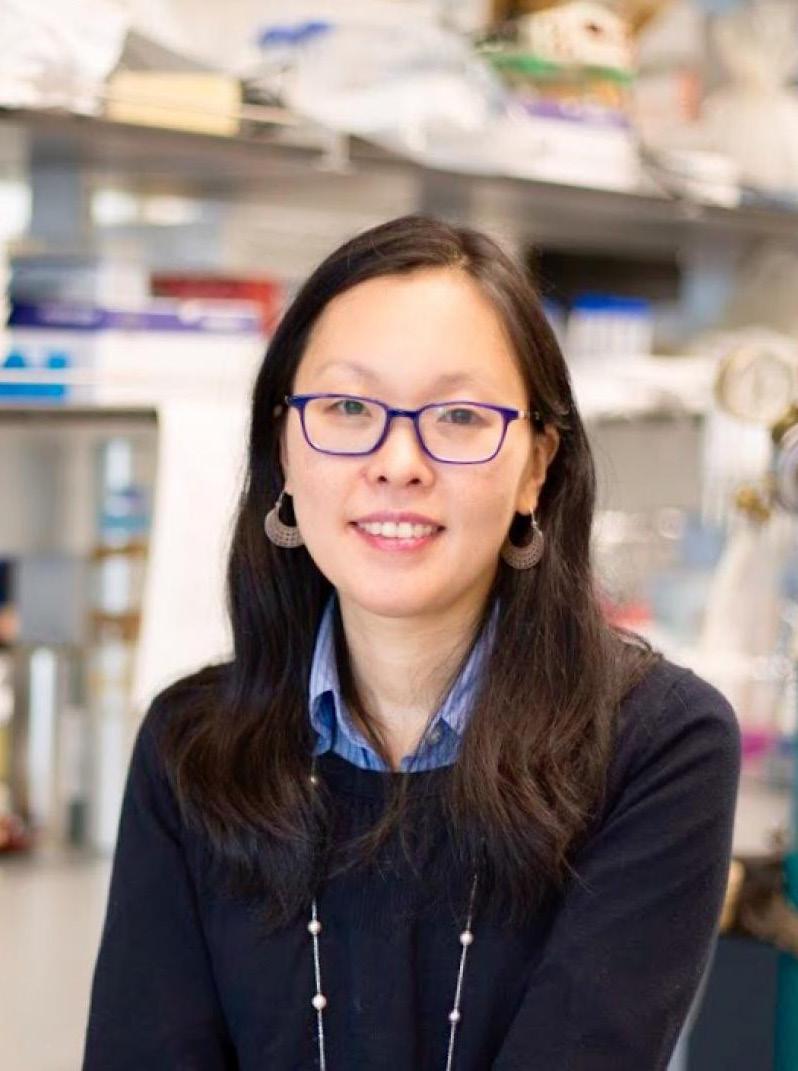
NYU TANDON UNCONVENTIONAL ENGINEER VOL. 332
Jin Kim Montclare
We’ve
create
materials to do things beyond what nature can do. - Jin Kim Montclare “ ”
Montclare is also working on biomaterials that could help make it easier to test for and treat COVID-19 and similar diseases. The condition, caused by the SARS-CoV-2 virus, attacks cells in the lungs, heart and brain, among other organs. Researchers soon realized that the disease affected these organs so dramatically because its distinctive spikes binded to the angiotensinconverting enzyme 2, or ACE2 receptor. The protein — common in those organs — provides the entry point for the coronavirus to hook into and infect cells.
ACE2 receptors were thus the obvious choice when testing for or treating COVID-19. By recreating the ACE2 and introducing it to an infected body, the virus would bind to the protein, revealing itself in a test or occupying itself with a ‘fake’ receptor. But relying on the ACE2 protein alone may not provide sufficient binding to find and fight the virus.
Montclare and her team have created a new protein that has an increased ability to bind to viruses, creating a more efficient tool in the fight against COVID-19. The secret is creating a version of ACE2 that mimics a multivalent assembled protein (MAP). Multivalent assembled proteins are like naturally occurring
antibodies. Their bodies have multiple sites that can link and bind to the viruses they are trying to attack, making them far more effective at hooking into their targets.
The ACE-MAP the team designed utilizes a coil-shaped cartilage oligomeric matrix protein, a nanomaterial that Montclare’s lab has used before in different applications. When fused with part of ACE2 across the coils surface, they found that the new materials greatly increased the valency compared to ACE2 alone, potentially binding to multiple virus bodies at a time rather than a single one.
This new material has potential uses in both detection and treatment. Because the biomaterial is so much more effective at attaching itself to viral bodies, it would require fewer of them compared to the natural antibodies currently used in tests and therapeutics. This technology has possible uses in testing for and treating other diseases with known receptors and a similar structure, such as HIV. Ongoing research will confirm the effectiveness of ACE-MAP in other models, and may be a key component of the fight against COVID-19 in the future.

33
Tandon researchers have developed a gel for delivering pharmacologic treatment directly to joints to halt the onset and progression of osteoarthritis.
UNVEILING HIDDEN HEALTH FACTORS
In the United States, roughly 13% of women will develop breast cancer, and more than 43,000 women are expected to die as a result in 2021. The disease represents a serious problem for public health. And while screening for the disease can help prevent catastrophic results, monitoring the progression of cancer and how it responds to treatment can be difficult.
Now researchers at NYU Tandon are developing the technology to help track the development of breast cancer,
without causing further harm. In the lab of Professor and Chair Andreas Hielscher (BME) researchers are utilizing an optical tomography device that can be used to recognize and track breast cancer, without the negative effects of previous imaging technology. Traditional x-ray technology has a host of negative side effects due to radiation output, which makes it problematic to do regular scans on tumors. Their device uses nearinfrared light to shine into breast tissue and measure light attenuation that is caused by the propagation through the affected tissue.

The change in the amplitude of the light as it passes through the breast is a result
from water, lipids, and oxyhemogoblin’s distribution throughout the tissue, and they can use these potential biomarkers as signs for cancerous tissue. By using the sensors, they can create 3D models of problematic tissue formations, and would be able to track tumors as they grow or shrink as treatments are applied. The technology, spearheaded by Hielscher, offers an opportunity for clinicians treating breast cancer patients to acquire far more information about their patients and their treatments than possible with other technologies.
The technology is not just limited to breast cancer. Systemic lupus erythematosus (SLE), commonly referred
NYU TANDON UNCONVENTIONAL ENGINEER VOL. 334
This optical tomography device can be used to recognize and track breast cancer, without the negative effects of previous imaging technology.
to as simply “lupus”, is an autoimmune disorder where the body’s immune system attacks healthy tissue. Lupus affects somewhere between 20 to 150 people per 100,000, with variations among different racial and ethnic groups. The disease often causes arthritic symptoms in the joints, which can be debilitating in some cases.
Despite the severity of the disease, identification of lupus arthritis and assessment of its activity remains a challenge in clinical practice. Evaluations based on traditional joint examination lack precision, due to its subjective nature and accuracy in situations such as obese digits and co-existing fibromyalgia. As such, these examinations have limited ability to render quantitative data about improvement and worsening.
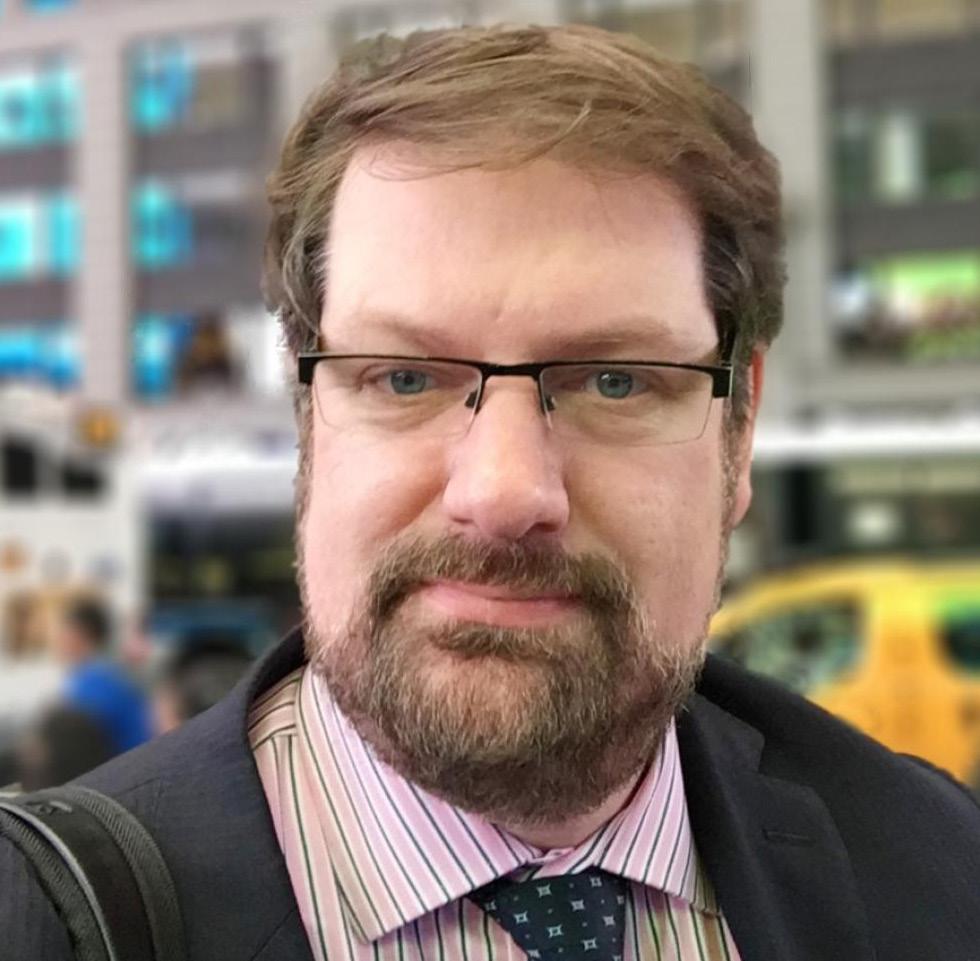
Recently, imaging technology, especially ultrasound (US) and magnetic resonance imaging (MRI), has enabled more objective and detailed assessment of articular and periarticular abnormalities with higher sensitivity. However, MRI and
US are expensive and time-consuming. Furthermore, US has been found to be very operator dependent. Therefore, both modalities are currently not routinely used in practice. There is a clear unmet need for a simple, reliable, non-invasive and low-cost imaging modality that can objectively assess and monitor arthritis progress in patients with lupus.
Now, researchers at NYU Tandon in collaboration with Columbia University are exploring optical imaging technology as a reliable way to diagnose patients and assess the progression of the disease. The researchers, including Research Assistant Professor Alessandro Marone (BME) and Hielscher, found that frequency domain optical imaging could reliably identify lupus arthritis, and could be used to track how the disease progressed.

The results provide strong evidence that frequency domain optical images could provide objective, accurate insights into SLE that were not possible
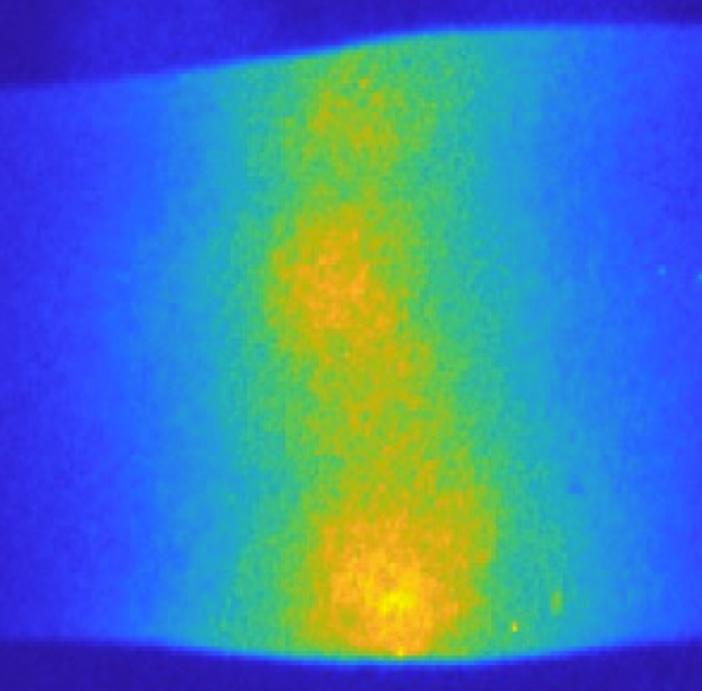
or economically feasible using other technologies. The light diffusion identified inflammation in the blood vessels around joints, similar to but distinct from the symptoms caused by rheumatoid arthritis. With this technology, caregivers may not have to rely on patient feedback to track the progression of lupus, but can see it in action.
Optical imaging methods have been used in studies comparing osteoarthritis, rheumatoid arthritis (RA) and healthy controls. The results of those studies highlighted that patients suffering from RA have higher light absorption in the joint space compared with healthy subjects. This is likely due to the presence of inflammatory synovial fluid that decreases light transmission through the inflamed joints. But these observations have never been used to study lupus before, and these findings could provide a reliable, rapid, and cost-effective method of assessing joint involvement in lupus patients.
35
Alessandro Marone
Andreas Hielscher
Tandon researchers are using frequency domain optical imaging to reliably identify lupus arthritis and track how the disease progresses.
THE POWER OF DATA + HEALTH
Mapping firearm ownership across the country
Policy-makers are faced with an exceptional challenge: how to reduce harm caused by firearms while maintaining citizens’ right to bear arms and protect themselves. This is especially true as the Supreme Court has hobbled New York State regulations restricting who can carry a concealed weapon.
While meaningful legislation requires an understanding of how access to firearms is associated with different outcomes of harm, this knowledge also calls for accurate, highly-resolved data on firearm possession, data that is presently unavailable due to a lack of a comprehensive national firearm ownership registry.
Newly published research from data scientist and firearm proliferation researcher Instiute Professor Maurizio Porfiri (MAE, BME, CUE, and Director of CUSP) and co-authors Roni Barak Ventura, a post-doctoral researcher at Porfiri’s DSL, and Manuel Ruiz Marin of the Universidad Politécnica de Cartagena, Spain, describe a spatio-temporal model to predict trends in firearm prevalence on a state-by-state level by fusing data from two available proxies — background checks per capita and suicides committed with a firearm in a given state. The study “A spatiotemporal model of firearm ownership in the United States,”
in the Cell Press journal Patterns, details how, by calibrating their results with yearly survey data, the team determined that the two proxies can be simultaneously considered to draw precise information regarding firearm ownership.
Porfiri, who in 2020 received one of the first newly authorized NSF federal grants for $2 million to study the “firearm ecosystem” in the U.S., has spent the last few years exploring gun acquisition trends and how they relate to and are influenced by a number of factors, from media coverage of mass shootings to the influence of the sitting President.
“There is very limited knowledge on when and where guns are acquired in the country, and even less is known regarding future ownership trends,” said Porfiri. “Prior studies have largely relied on the use of a single, select proxy to make some inference of gun prevalence, typically within simple correlation schemes. Our results show that there is a need to combine proxies of sales and violence to draw precise inferences on firearm prevalence.” He added that most research aggregates the measure counts within states and does not consider interference between states or spill-over effects.
Their study shows how their model can be used to better understand the relationships between media coverage, mass shootings, and firearm ownership, uncovering causal associations
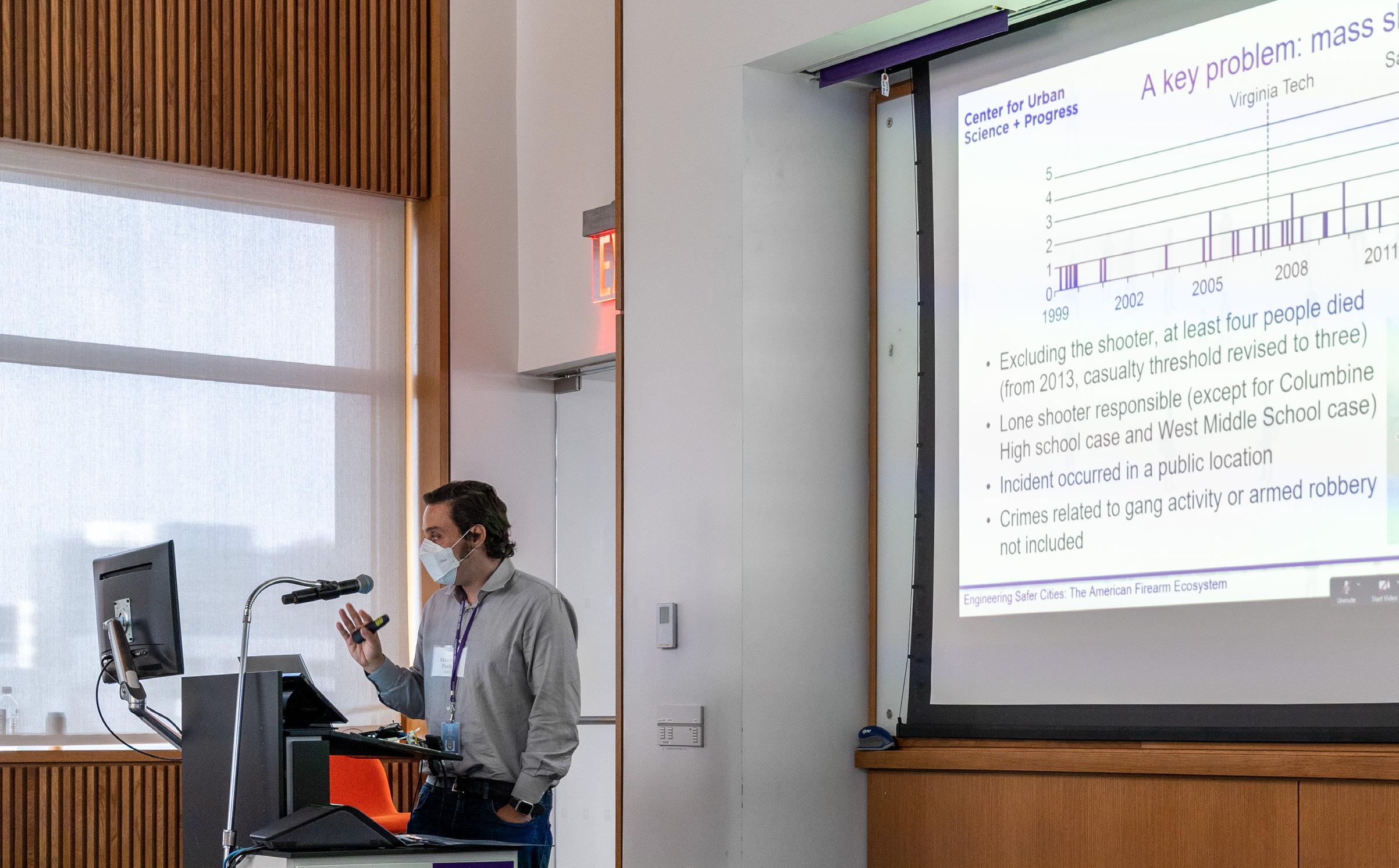
NYU TANDON UNCONVENTIONAL ENGINEER VOL. 336
that are masked when the proxies are used individually. While the researchers found, for example, that media coverage of firearm control is causally associated with firearm ownership, they discovered that their model generating a strong firearm ownership profile for a state was a strong predictor of mass shootings in that state.
“The potential link between mass shootings and firearm purchases is a unique contribution of our model,” said Ruiz Marin. “Such a link can only be detected by scratching the surface on the exact gun counts in the country.”
“We combined publicly available data variables into one measure of ownership. Because it has a spatial component, we could also track gun flow from one state to another based on political and cultural similarities,” said Barak-Ventura, adding that the spatial component of the work is novel. “Prior studies looked at a correlation of two variables such as increasing background checks and an increase in gun violence.”
Barak-Ventura said the team is now using their model to explore which policies are effective in reducing death by guns in a state and surrounding regions, and how the relationship between gun ownership and violent outcomes is disrupted by different legislation.

“
37
We could also track gun flow from one state to another based on political and cultural similarities we could also track gun flow from one state to another based on political and cultural similarities - Roni Barak Ventura
”
Director of CUSP Maurizio Porfiri delivers a flash technical talk on the firearms ecosystem at an Engineering Safer Cities Event. Photo credit: Anna Sawulska, courtesy of the Dynamical Systems Laboratory.
“Big Data” takes on hospitalizations

Modern predictive models require large amounts of data for training and evaluation, the absence of which may result in models that are specific to certain locations, their populations and the clinical practices there. Currently, best practices for clinical risk prediction models lack a level of “generalizability” that could vastly increase their usefulness for other clinical settings in other locations.
A team of NYU Tandon researchers led by Associate Professor Rumi Chunara (CSE, NYU School of Global Public Health) investigated whether mortality prediction models vary significantly when applied to hospitals or geographies different from the ones in which they are developed. They also queried the data to determine specific characteristics of the datasets — involving analysis of electronic health records from 179 hospitals across the U.S. with 70,126 hospitalizations from 2014 to 2015 — that could explain variations in clinical performance based on factors like race.
In a new study, the researchers found that mortality risk prediction models that
included clinical (vitals, labs and surgery) variables developed in one hospital or geographic region exhibited a lack of generalizability to different hospitals or regions. Based on a causal discovery analysis, they postulated that this lack of generalizability results from dataset shifts in race and clinical variables across hospitals or regions. In short, the race variable is intimately connected to clinical variables.
“It is clear from this research that data models — in terms of factors like mortality risk prediction at a hospital to hospital and regional hospital group level — are not immediately generalizable, and that has implications for hospitals that can’t generate these models for themselves,” said Chunara.

Findings also demonstrate evidence that predictive models can exhibit disparities in performance across racial groups even while performing well in terms of average population-wide metrics.
“While it is well documented that clinical factors and outcomes can vary significantly by race, it is critical that we understand why those differences exist, and thus examination of data and models must be done in a larger context alongside diverse influences,
from geographic and socioeconomic to clinical,” she said.
Specifically, the study suggests that beyond algorithmic fairness metrics, an understanding of data generating processes for sub-groups is needed to identify and mitigate sources of variation, and to decide whether to use a riskprediction model in new environments.
NYU TANDON UNCONVENTIONAL ENGINEER VOL. 338
Rumi Chunara
Researchers found that hospital mortality risk prediction models that included clinical variables developed in one hospital were not generalizable to different hospitals or regions, at least in part due to disparities in race.
EyeScore: Predicting stroke risk
One in six deaths from cardiovascular disease is due to stroke. Caused by a blood clot in the brain, a stroke can have severe consequences, even minutes after initially occurring. That is what makes prevention so important.
Now, thanks to NYU researchers, including a collaborative effort between NYU Assistant Professor S. Farokh Atashzar (ECE, MAE, BME, CUSP, NYU WIRELESS), and NYUAD Assistant Professor Farah Shamout, early monitoring may soon be available at an unlikely location: your eye doctor.

Their Project, called EyeScore, is developing a technology that uses non-invasive scans of the retina to predict the recurrence of stroke in patients. They use optical coherence tomography — a scan of the back of the retina — and track changes over time. The retina, attached directly to the brain through the optic nerve, can be used as an indicator for changes in the brain itself.

Atashzar and Shamout are currently formulating their hybrid AI model, pinpointing the exact changes that can predict a stroke and recurrence of strokes. The outcome will be able to analyze these images and flag potentially troublesome developments. And since the scans are already in use in optometrist offices, this life-saving technology could be in the hands of medical professionals sooner than expected.
The Data Behind Pandemics
Any large-scale pandemic, such as COVID-19, is an example of a large-scale disease propagation network that can be seen as an “interconnected mega-grid” where complex interactions and distributed delays in the interconnections lead to hard-to-predict, echoing “waves” of disease spread. Assistant Professor S. Farokh Atashzar (ECE, MAE, CUSP, NYU WIRELESS), with the support of a $1.1M Collaborative NSF grant and in collaboration with researchers at Northeastern University, will dive into these “waves” by developing novel approaches to computational network modeling and designing optimal mitigation control to minimize the spread.
This research seeks to develop a comprehensive framework for datadriven control of large-scale networks where time delays and complex behavior play an important role. In the COVID pandemic, such effects led to “reflective” spreading waves, resulting in hard-to-predict and hard-to-control phases of infection spread, which were not accurately analyzable using classic small-scale epidemic modeling approaches. Thus, new computational frameworks are needed to take into account (a) unique signatures of mega-networks of connected societies and (b) complex disease spread behavior. The goal is to enhance pandemic preparedness and to make healthcare systems and governments ready to respond well to potential future airborne epidemic diseases.
S. Farokh Atashzar
Tandon
researchers are collaborating with NYU Abu Dhabi to develop hybrid AI models that analyze non-invasive optical coherence tomography retina scans to predict stroke risk 39

Urban Innovation
INCREASED URBANIZATION CALLS FOR INCREASED LIVABILITY
With more than half of the world’s population now residing in urban areas and that figure expected to rise to more than 70% by the middle of the century, NYU Tandon is helping envision the cities of the future.
Navigating the world
In partnership with Toyota subsidiary Woven Planet Holdings, Tandon researchers have compiled a dataset of more than 200,000 outdoor images over the course of a year aiming to help visually impaired pedestrians and autonomous vehicles alike better navigate complex urban settings.
The dataset — developed by a team led by Assistant Professor Chen Feng (CUE, MAE, CSE) at his AI4CE Lab and sponsored by C2SMART (Tandon’s U.S.DOT Tier 1 University Transportation Center) and VIDA — is being used to test a range of visual place recognition (VPR) technologies that can improve the accuracy of personal and automotive navigation applications and promote independence for a variety of users.
It uses side-view images of sidewalks and storefronts in addition to forwardfacing imagery, allowing researchers to test more applications than traditional mono-perspective sources. For example, side views support navigation for people with impaired vision who navigate in 360
degrees across busy city sidewalks, and the data could also help improve delivery robots, which must move forward and back as well as side to side to reach homes and businesses.
This marks the first work to systematically analyze some of the biggest challenges of visual place recognition, and in addition to providing data from multiple viewpoints, the dataset uniquely
• Captures long-term changes of the same urban area for a year, so researchers can improve VPR under varied conditions like snow and heavy foliage.
• Anonymizes images to protect the privacy of pedestrians and cars. The anonymized images also provide VPR algorithms static and environmentonly information
The NYU-VPR dataset was published at IEEE IROS in 2021, and is publicly available for research and education purposes at https://ai4ce.github.io/NYUVPR/#download

(TRAFFIC) LIGHTS, CAMERA . . . ACTION
In the midst of the COVID-19 pandemic, many research groups sought an effective method to determine mobility patterns and crowd densities on the streets of major cities like New York to provide insight into the effectiveness of stay-at-home and social distancing strategies. But sending teams of researchers out into the streets to observe and collect this data would have involved putting them at risk of exposure to the very infection the strategies were meant to curb.
At C2SMART, which is funded by the U.S. Department of Transportation (DOT), a team co-led by Professor Kaan Ozbay (CUE and Director of C2SMART) and Senior Research Associate Dr. Jingqin Gao (CUE, C2SMART) developed a solution that not only eliminated the risk of infection to researchers and that could easily be integrated with already existing public traffic camera infrastructure, but also provided the most comprehensive data on crowd and traffic densities that had ever been compiled.
In order to cover hundreds of locations with 24-hour coverage over many months, the job had to be performed by an AI algorithm instead of human or conventional traffic counters. There are complications that the AI has to overcome from each video feed: the locations are different, the camera angles and height are different, and they are subject to different lighting and positional factors. In other words, it’s difficult for the traditional AI models to learn just one intersection and automatically apply it to another one.
To enable their AI solution, the C2SMART researchers started with an object detection model, namely You Only Look Once (YOLO), which is pre-trained using Microsoft’s COCO dataset. Then they retrained and localized the object detection model with additional images and various customized post-processing filters to compensate for the lowresolution images produced by New York City DOT video feeds that are publicly available. Although the off-the-shelf object detection model could work in this instance with some customization, when it came to measuring the distances between the objects, the team had to
develop a novel algorithm, which they refer to as a reference-free distance approximation algorithm.
While the project was inspired by the COVID-19 pandemic, it demonstrated to several New York City agencies that they were sitting on very valuable actionable data that could be used for many different purposes. Ozbay, Gao, and Ph.D. student Fan Zuo (CUE, C2MART), along with a number of graduate and undergraduate students from the Tandon School of Engineering and NYU Abu Dhabi, are now working with New York’s Department of Design and Construction (DDC) and the NYC DOT to use the same kind of approach to analyze traffic around work zones and other key facilities such as intersections and onstreet parking without them needing to actually go out to those locations. They are also incorporating such approaches in predicting pedestrian intention to other emerging fields, such as connected and autonomous vehicles to improve road user safety. They hope that the success of the technology will ultimately lead other DOTs across the country to adopt it themselves.

Additionally, they report, the project has been an excellent platform for engaging graduate, undergraduate and high school students from NYU’s ARISE program in the use of the most advanced AI/ML technologies to solve some of our cities perennial problems.

NYU TANDON UNCONVENTIONAL ENGINEER VOL. 342
Kaan Ozbay Jingpin Gao
Three Tandon researchers teamed up to curate an issue of the European Physical Journal Special Topics on complex urban systems, with articles covering urban policing, roof-integrated wind turbines, and the design of efficient public transit, among others
Each issue of the European Physical Journal Special Topics is focused on a specific subject, with particular emphasis placed upon interdisciplinary topics in physics and related fields. With experts predicting that more than two-thirds of the world’s population will be living in cities by 2050, complex urban systems constitute an area ripe for exploration.
In 2022, Tandon’s Vice Dean for Research, Innovation and Entrepreneurship, Professor Kurt Becker (MAE, AP); Professor Juan Pablo Bello (CSE, NYU Steinhardt, and former Director of CUSP); and Institute Professor Maurizio Porfiri (MAE, BME, CUE, and Director of CUSP) approached the journal with the idea of devoting an issue to that ever-evolving field.
Rapid urbanization, they pointed out, poses numerous challenges, including transporting people and goods efficiently, ensuring reliable electrical power and water, considering the health and wellness needs of populations that include older adults and people with disabilities, preparing for the waves of migration expected in the wake of climate change, and building an accessible and inclusive environment. None of those challenges can be addressed in isolation, they explained, since urban environments represent complex, intertwined socioeconomictechnical-environmental systems that require cross-disciplinary scientific and technological approaches — just the type of approaches they and their colleagues were taking on at Tandon and elsewhere.
Becker, Bello, and Porfiri curated a collection of 12 peer-reviewed articles,
half of which were authored or coauthored by Tandon faculty or doctoral students, including pieces on what impact a reduced police force may have on response time — a salient concern given recent calls by some activists to defund the police; ways to improve the generally poor performance of most roof-integrated wind turbines; the design of efficient public transit dispatch systems; and more.
Science and technology are key in meeting the complex urban challenges of the present and future, Becker, Bello, and Porfiri say, and the research presented in the European Physical Journal Special Topics issue on complex urban systems proves just how true that is.

43
NYU Tandon professors team up to explore complex urban systems
COMPLEX ENVIRONMENTS LIKE CITIES POSE COMPLEX CHALLENGES, AND THE NEW DIRECTOR OF CUSP THRIVES ON COMPLEXITY
How do animals behave? How do people reach a consensus?
How does a pandemic spread? What drives gun purchases?
What happens when particles collide? Can a deep sea sponge hold the answer to stronger skyscraper design?
On the surface, those questions appear to have little in common, but Maurizio Porfiri sees a clear connective thread — dynamic, complex systems whose key to understanding lies in leveraging a distinctive combination of data science, physics principles, and other aspects of engineering. Porfiri’s research space at Tandon is called the Dynamical Systems Laboratory precisely because of his fascination with the unseen relationships in data sets both big and small that reveal how complex systems work. And as an Institute Professor with appointments in the Departments of Mechanical & Aerospace Engineering, Biomedical

Engineering, and Civil & Urban Engineering, he’s able to draw on an uncommonly diverse set of expertise to shine a light on previously undetected patterns that can help model outcomes for extremely difficult scenarios.
Now, he is taking that expertise and a unique vision for the potential of urban science to lead CUSP as its new Director.
CUSP had its genesis in 2012, when New York City issued a call for a new kind of academic center that would ensure that the city remains a world capital of applied sciences and technology, dramatically grow its economy, and function in collaboration with nonprofits, the public, and the city itself.
Since its inception, CUSP has grown to become a thriving research hub that uses New York City and other urban areas as living labs to develop novel data- and technology-driven ways to improve city services; optimize decision-making by local governments; create smart urban infrastructures; and address challenging issues such as crime, environmental pollution, and public health. The Center has been celebrated
NYU TANDON UNCONVENTIONAL ENGINEER VOL. 344
The new Director of Tandon’s Center for Urban Science + Progress is bringing his knowledge of complex dynamical systems, including how a deep sea sponge stands up to extreme underwater pressure, to improve urban environments.
for major projects that make urban communities safer, healthier, and more livable, including SONYC, an initiative to measure and mitigate noise pollution — a top-ranked quality-of-life concern for all New Yorkers; FloodNet, which in collaboration with the U.S. DOTfunded C2SMART seeks to monitor and predict local flooding; and WE-SAFE, an interdisciplinary project to understand and engineer the firearm ecosystem in the U.S.
And — with the help of a large group of faculty members whose expertise encompasses AI, assistive technologies, data science, environmental science, human-technology interaction, public health, robotics, and numerous other fields — Porfiri foresees CUSP moving in an even more expansive direction.

Porfiri’s unique expertise in complex systems makes him well-suited to lead a research center at the forefront of defining what a post-pandemic, modern city can — and should — look like. It’s an especially pressing issue since for the first time in history more than half of the world’s population lives in urban areas; in just a few more decades, that figure will increase to 70 percent. Enabling those cities to deliver services effectively, efficiently, and sustainably while keeping their citizens safe, healthy, prosperous, and well — informed will be among the most important undertakings of this century.
Building upon the work of previous directors, Porfiri plans to hone in on three key application areas: urban environment, urban health, and urban infrastructure — each a cornerstone of equitable, liveable, and sustainable cities. Solving real-world problems in any of these application areas demands fundamental research in a trio of core methodical foundations, which define the full research cycle in urban science, from data collection (sensing) to data analysis (informatics) to the modeling, design, and diagnostics of complex urban systems (complexity).
Working toward the vision of a research center that builds bridges between departments in the School of Engineering, various schools of NYU, and the university and the world’s metropolitan areas, he plans to create

• A research partnership program for public and private organizations that will be invited to engage in informing CUSP’s research agenda, participate in the life cycle of collaborative grants and projects, and access a pool of exceptionally qualified potential employees
• An Urban Science Colloquium to engage the overall NYU community in urban science and learn from community stakeholders about their needs, values, and desires as NYC residents
• A series of CUSP-led discussion groups on critical urban issues for the general public in partnership with student associations at the School of
Engineering: the first planned series, Engineering Safer Cities, will focus on deconstructing violence, criminality, and neighborhood security.
• An interdisciplinary track in urban science for Ph.D. students at the School of Engineering — paving the way for the first cohort of doctorallevel urban scientists in the history of the school.
That last initiative will allow Ph.D. students to leverage their specific expertise to address urban processes. A biomedical engineer, for example, might choose to explore how more accessible infrastructure can improve the lives of those with mobility challenges, or an electrical engineer could aim to bridge the digital divide by focusing on expanding internet access to underserved communities.
“Cities have social, technical, and environmental components,” Porfiri asserts, “and engineers like those we’re educating at CUSP address the important intersections between them. We want them to be at the leading edge of contributing to fundamental urban science while providing timely, practical, and actionable insights.”
Maurizio Porfiri
45
And the winner is . . .
Our faculty members spend countless hours in the lab, devote themselves fully to their students, and continually seek to apply their knowledge and skills to better the world. While the work may be its own reward, at Tandon, we publicly recognize their efforts each year with a series of awards.
Industry Associate Professor Rakesh Behera (MAE) received Tandon’s Distinguished Teacher Award, which is bestowed upon someone who has demonstrated sustained excellence in teaching. Rakesh is widely known among students for his accessibility and patience, as well as his use of activelearning techniques and real-life examples that make his labs and lectures exceptionally engaging

Miguel Modestino (CBE and Director of the SEI) was accorded the title of Donald F. Othmer Associate Professor of Chemical Engineering, based on his outstanding record of academic research, institutional service, and teaching achievement.
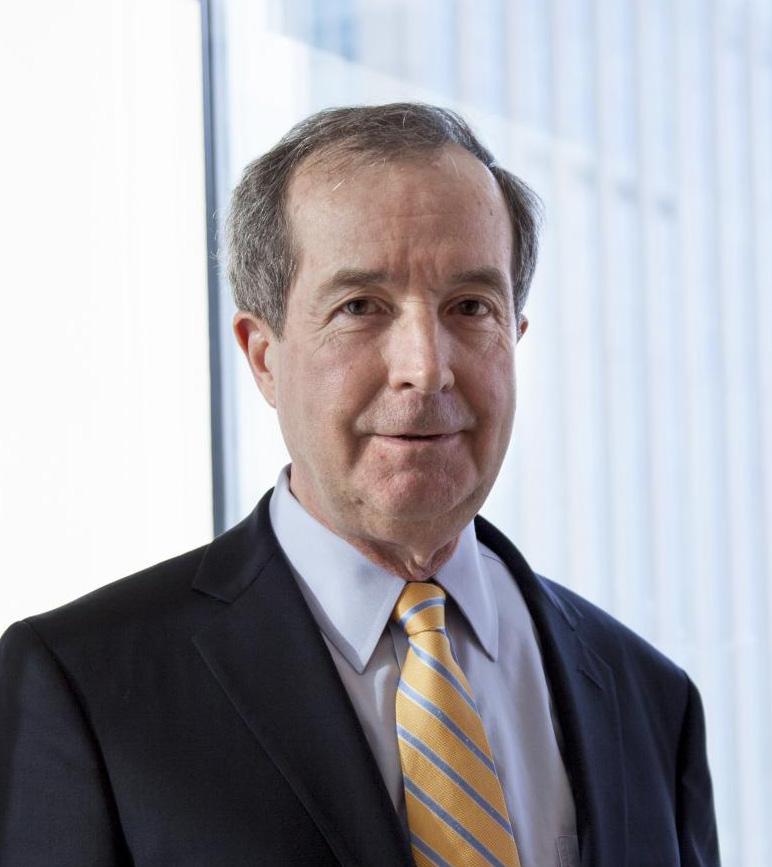
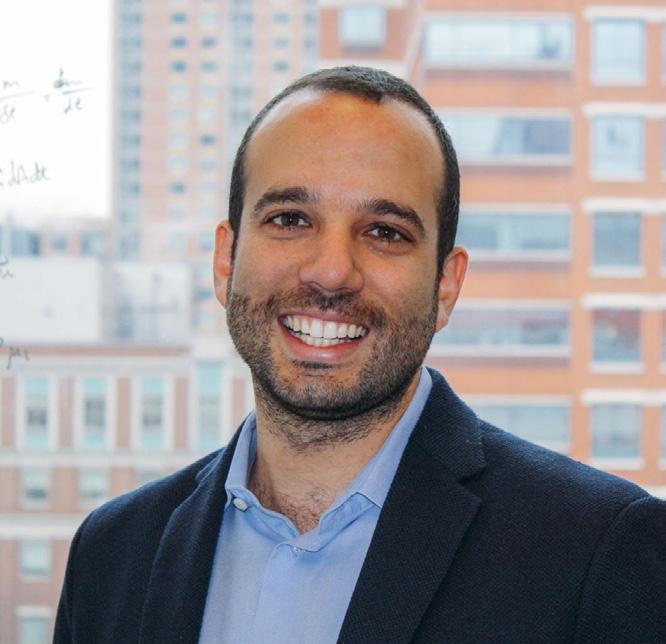
MORE HONORS ACCRUE . . .
The SIGMOBILE Test-of-Time Award recognizes papers that have had a sustained and significant impact in the Association for Computing Machinery’s Special Interest Group on Mobility of Systems, Users, Data and Computing (SIGMOBILE) community over at least a decade. This year, “Argos: Practical many-antenna base stations,” a 2012 paper co-authored by Distinguished Industry Professor Thomas Marzetta (ECE and Director of NYU WIRELESS) won the award for its early
demonstration of Massive MIMO, a technology that he pioneered and that has been vital to modern wireless communications.
Professor Jef D. Boeke (BME, biochemistry and molecular pharmacology at NYU Langone Health, and the Sol and Judith Bergstein Director of the Institute of System Genetics at NYU Langone Health) has been named a Fellow of the National Academy of Inventors (NAI), in recognition of his foundational work on mechanistic and genomic aspects of retrotransposition — the ability of genes to change position on chromosomes — in both yeast and mammalian systems, and his development of novel technologies in genetics, genomics and synthetic biology.

NYU TANDON UNCONVENTIONAL ENGINEER VOL. 346
Miguel Modestino
Jef D. Boeke
Thomas Marzetta
Rakesh Behera
Andrea Silverman
Assistant Professor Andrea Silverman (CUE, SEI, CUSP, C2SMART, NYU College of Global Public Health) is the recipient of NYU Tandon’s inaugural Inclusive Excellence Award for Faculty, established to honor a faculty member who demonstrates inclusive leadership and manifests the ideals of diversity, belonging, and
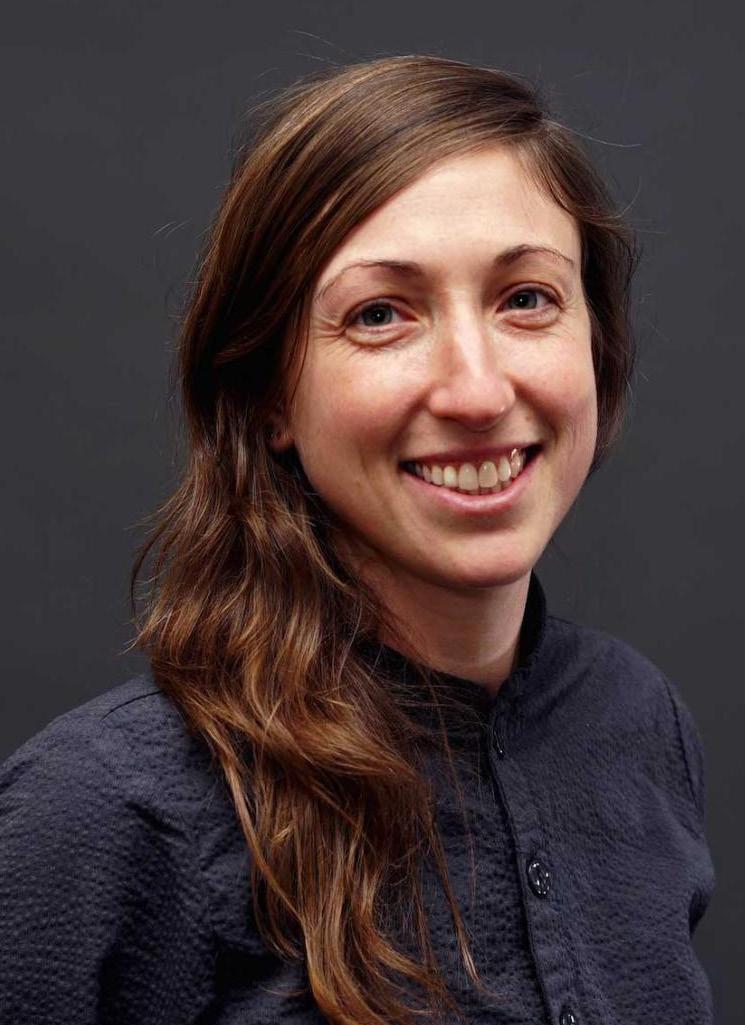
equity through research and scholarship, creative work, teaching, mentoring, and service. Before coming to Tandon, she demonstrated her deep commitment to improving conditions for marginalized communities at the International Water Management Institute in Accra and at a nonprofit in Nairobi. Here in Brooklyn, she has demonstrated a similarly deep commitment to inclusivity in STEM, and her research group is one of the most diverse at Tandon.
Zhong-Ping Jiang
The annual Excellence in Research Award is bestowed upon a faculty member who has published in prestigious journals, mentored students, been recognized by professional societies, and conducted important translational
research, and this year the honor went to Professor Zhong-Ping Jiang (ECE, CATT, C2SMART).
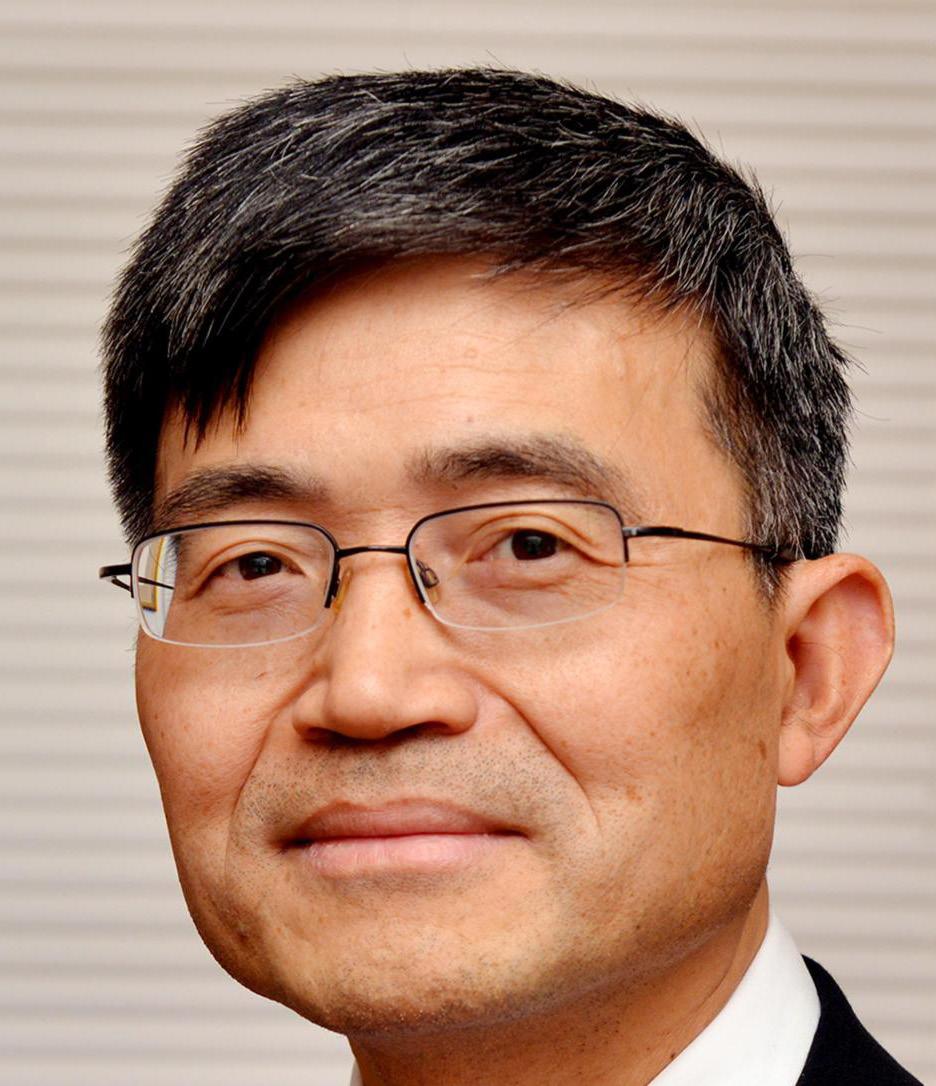
Jiang’s research interests lie at the interface of control and learning for network systems and have practical applications in many areas, including helping clinicians devise new ways to diagnose and treat neurodegenerative diseases such as Parkinson’s and Huntington’s and developing safe and robust automated lane-changing technology that will encompass interactions between vehicles, complex routing choices, and interactions between vehicles and the environment — a project that could greatly increase road safety.
FORGING A NOTEWORTHY CAREER
Among the highest honor given by the NSF is the CAREER Award, meant to support the early career-development activities of teacherscholars who effectively integrate research and education within the context of the mission of their organizations and who are expected to make lifelong contributions to their fields.
This year, two Tandon faculty members garnered the prestigious prize: Brendan Dolan-Gavitt
Assistant Professor Giuseppe Loianno (ECE, MAE, CUSP, NYU WIRELESS) received a five-year CAREER Award to support his work in boosting the ability of robots to navigate in challenging environments, like those encountered during search-and rescue missions or while conducting environmental monitoring.
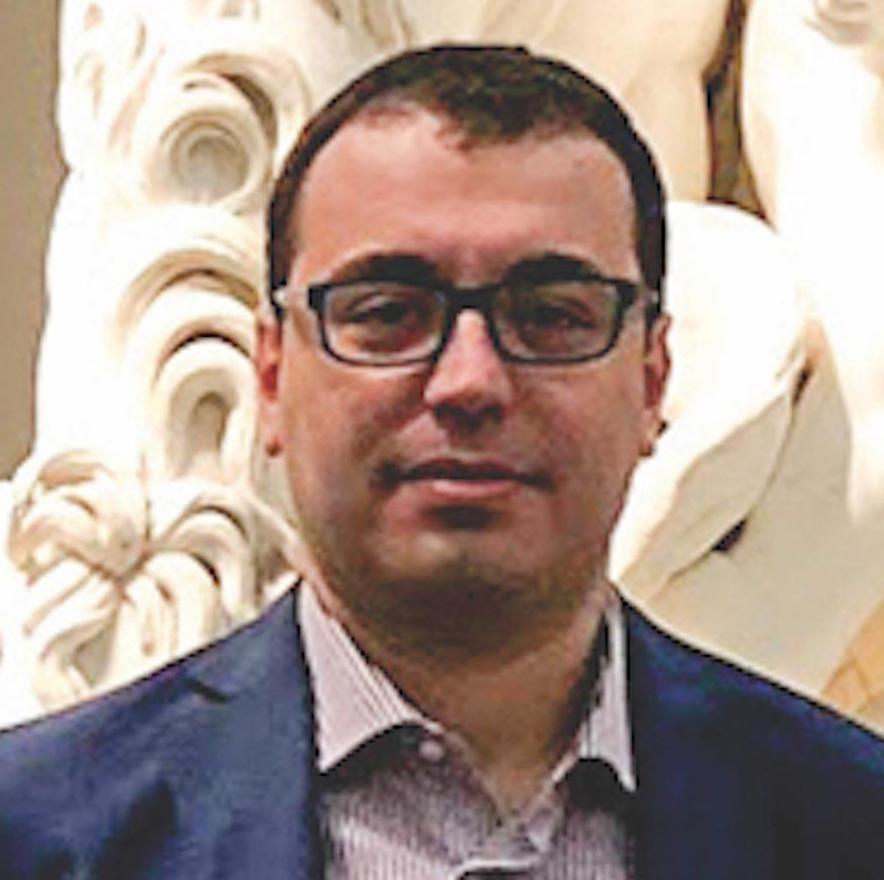
Assistant Professor Brendan Dolan-Gavitt (CSE, CCS) received a five-year award to support a project that aims to create techniques for automatically generating benchmark corpora of software vulnerabilities that can then be used to rigorously assess newly developed and existing tools used to root out dangerous programming bugs and make software safer.
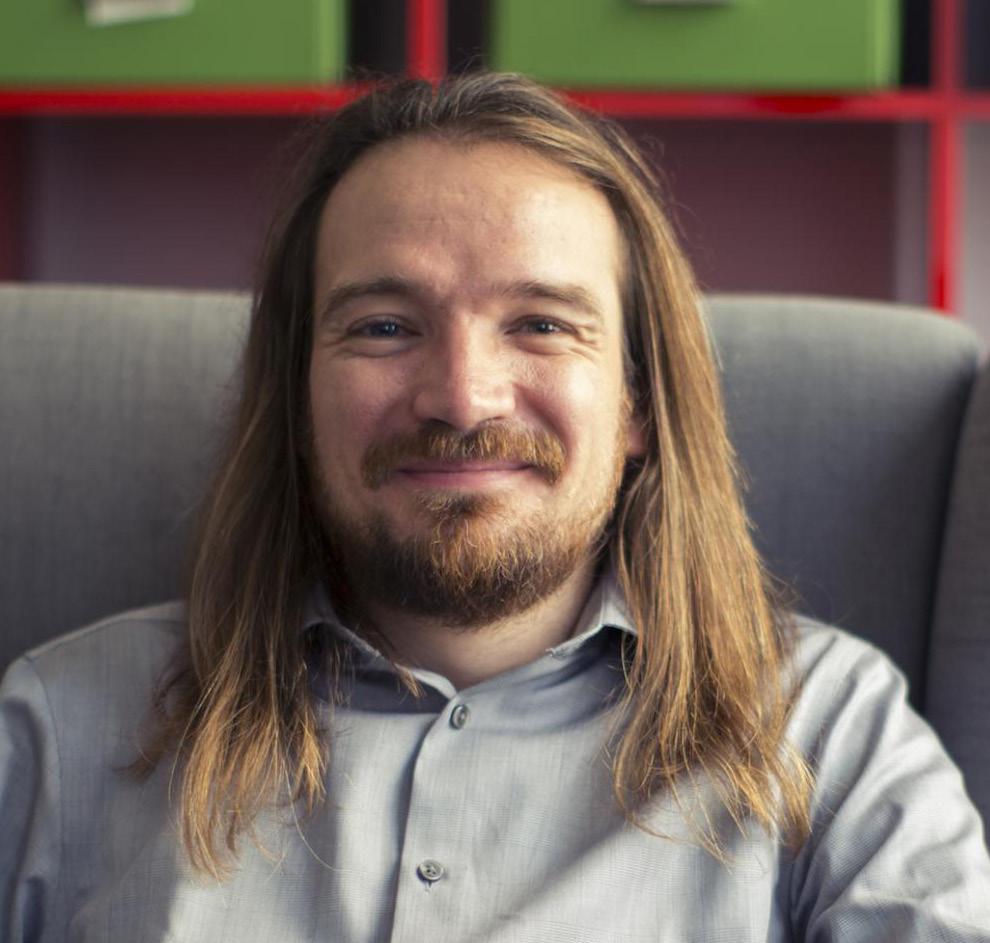
Juliana Freire (CSE, CATT, and co-founder and codirector of VIDA) had the distinction of becoming an Institute Professor, a rare title that honors exceptional and sustained contributions to the School of Engineering through outstanding research and educational activities.
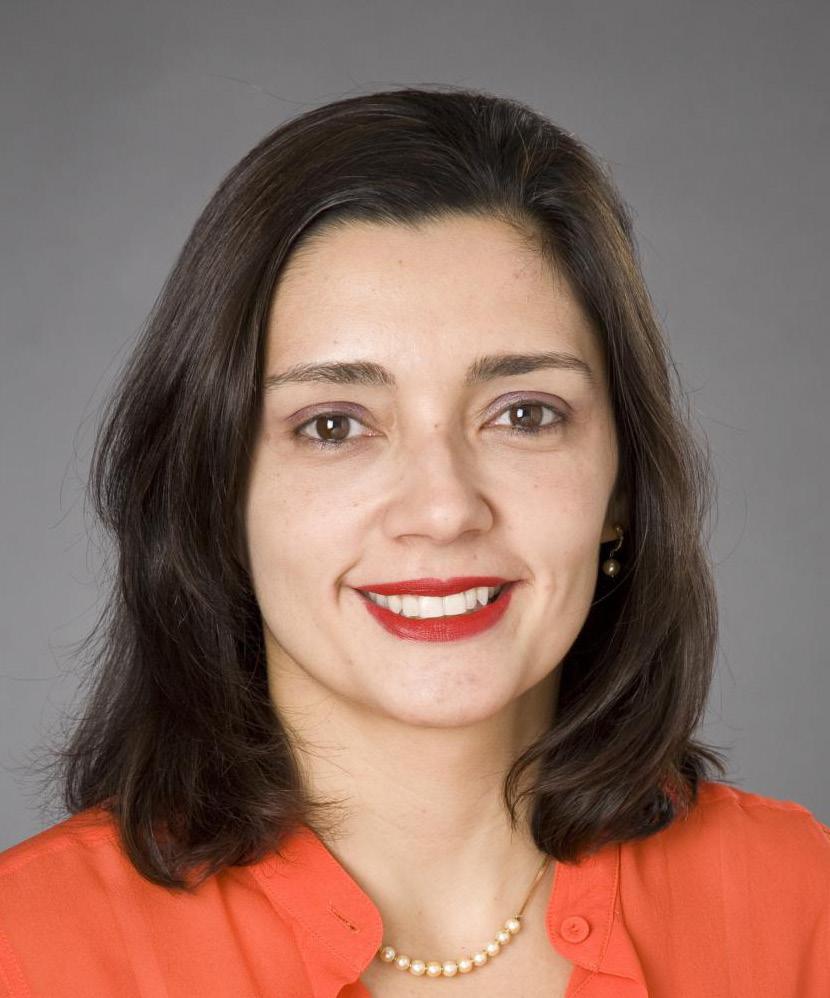
47
Giuseppe Loianno
Juliana Freire
Professor Daniel Katz-Braunschweig (CSE) and Industry Associate Professor Itay Tal (CSE) received the Dean’s Award for Excellence in Online Education, given to instructors who have demonstrated excellence, through personal commitment to students and the development and delivery of innovative online education material. The two are responsible, in large part, for the success of Tandon’s Bridge program, which prepares students with little to no STEM background for challenging technical master’s programs and which has grown from 16 students in the 2016 pilot phase to 700, with that number expected to exceed 1,000 soon.
Assistant Professor Chen Feng (CUE, MAE) is the recipient of this year’s Junior Faculty Research Award, which is presented annually to a tenure-track assistant professor in recognition of significant research accomplishments as demonstrated by publications in top-tier venues, funded research proposals, student mentoring, and recognition by professional societies. Chen oversees the AI4CE Lab, where he is working to advance fundamental automation and intelligence technologies such as robot vision and machine learning, while addressing the challenges their applications pose.
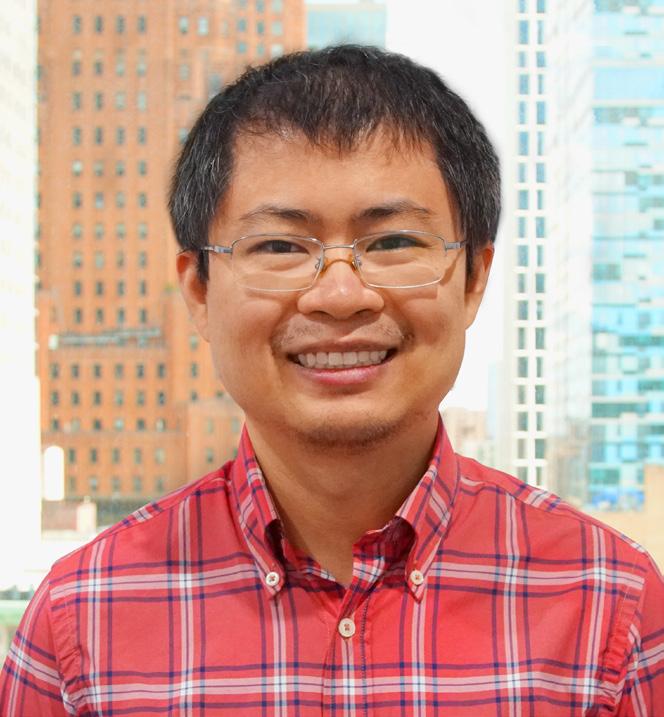
DEAN JELENA KOVAČEVIĆ RECEIVED THE 2022 EMBS CAREER ACHIEVEMENT AWARD
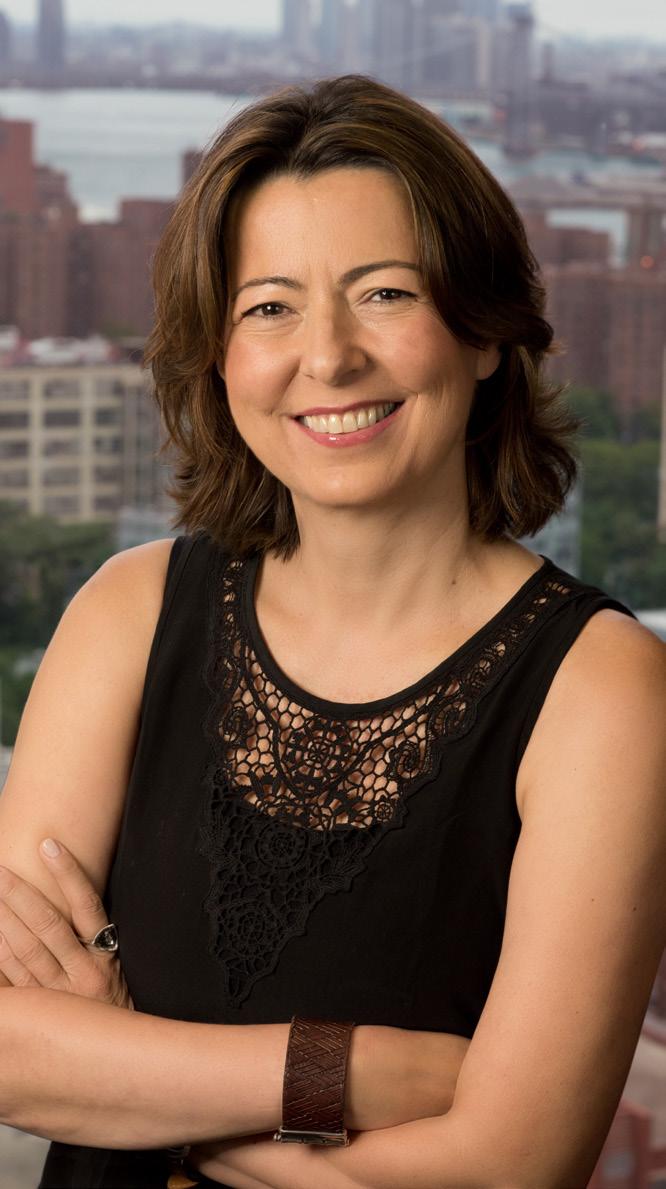
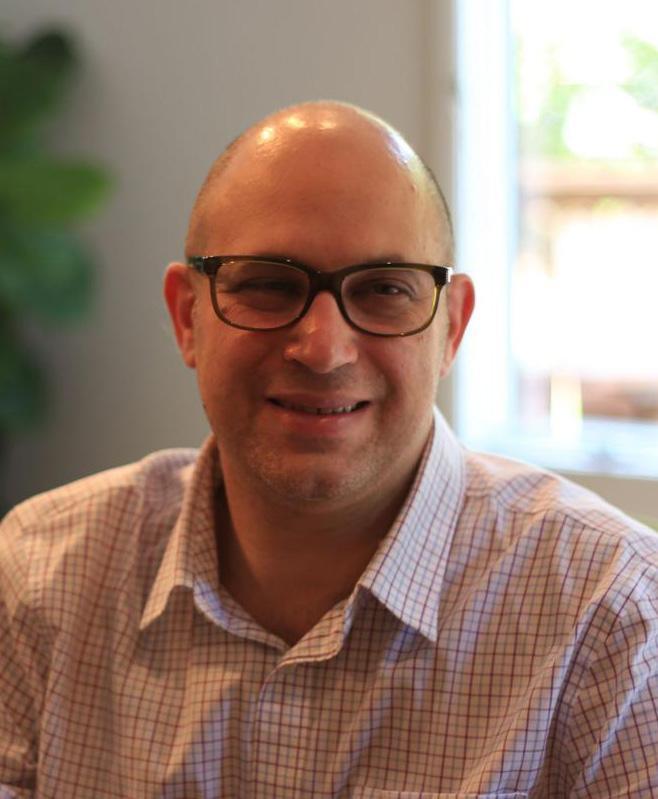
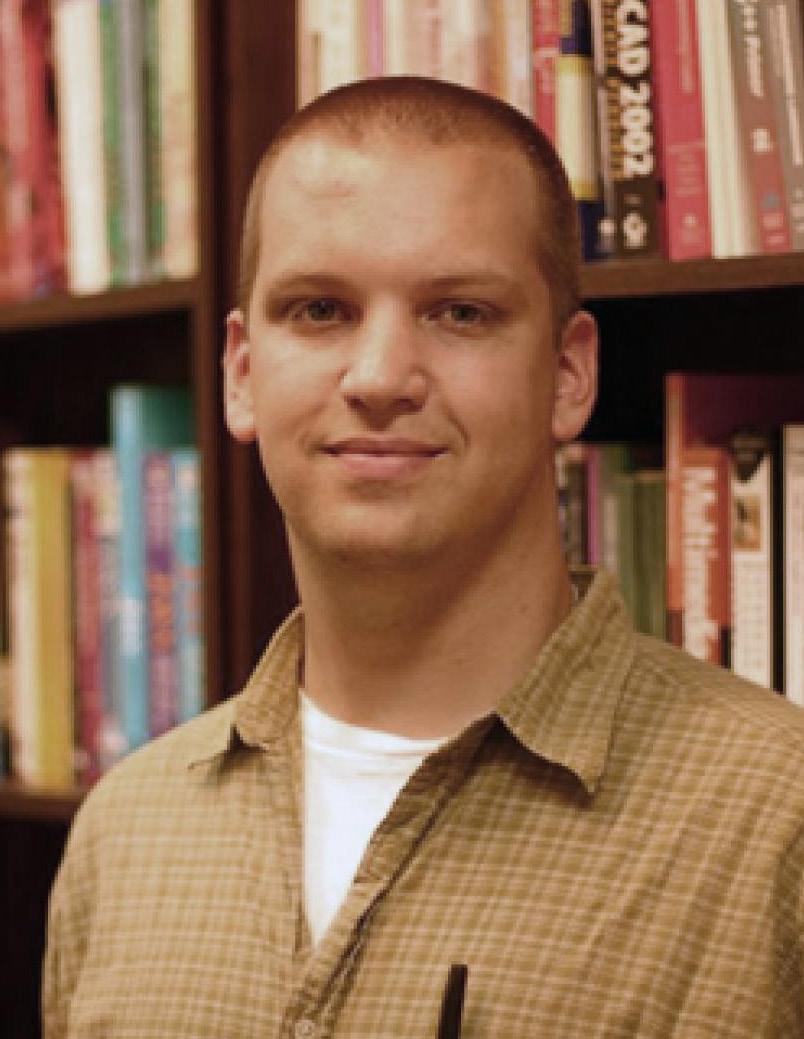
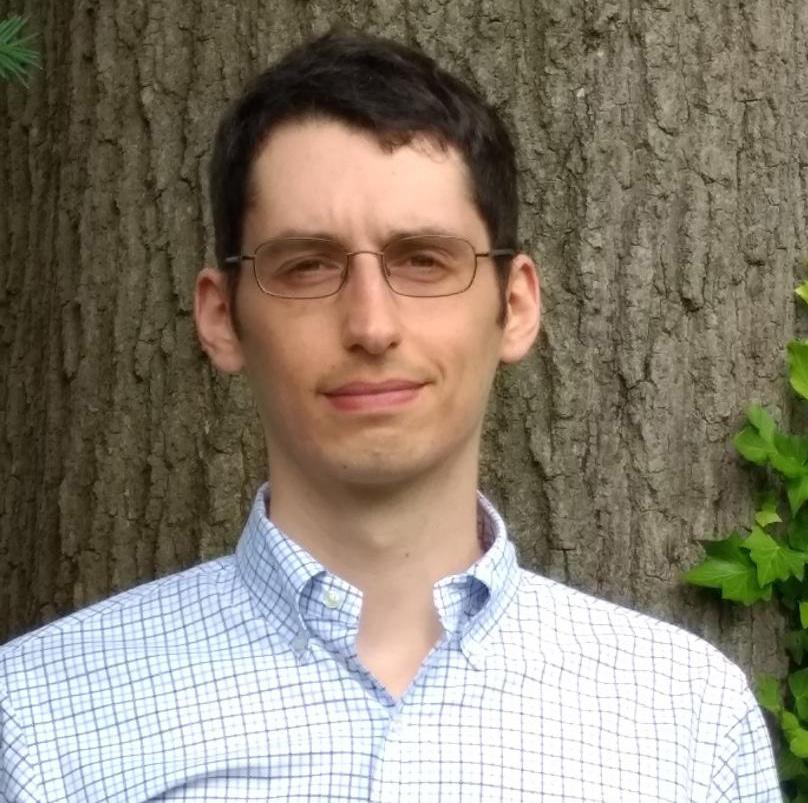
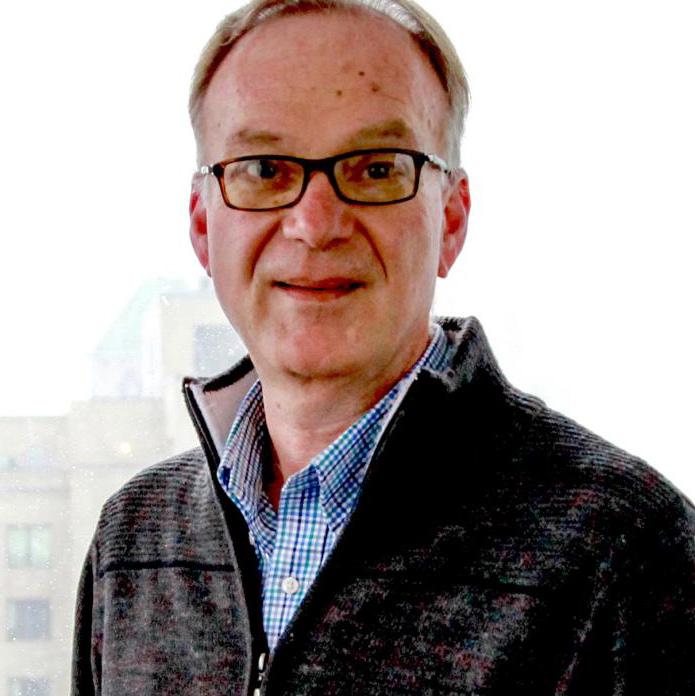
Signal processing. Machine learning. AI. However you refer to the field and its components, no one can argue the speed with which Dean Kovačević’s chosen area of research is evolving. In a testament to her long-lasting impact in the biomedical field, particularly in the Jelena Kovačević area of biomedical imaging, Kovačević was recognized for her pioneering and outstanding leadership in research and education by the IEEE Engineering in Medicine & Biology Society (EMBS) with a Career Achievement Award.
The Jacobs Excellence in Education Award, aimed at recognizing and fostering innovation and excellence in teaching, went jointly to Industry Assistant Professor Christopher Policastro (TMI) and Industry Professor Pavlos Mourdoukoutas (TMI Program Director). Together, they spearheaded a transformative Industry Partnerships program for the Management of Technology Capstone course that has substantially boosted the school’s reach and reputation.
NYU TANDON UNCONVENTIONAL ENGINEER VOL. 348
Christopher Policastro
Pavlos Mourdoukoutas
Chen Feng
Itay Tal
Daniel Katz-Braunschweig
 6 MetroTech houses the interconnected Rogers Hall and Jacobs Academic Building, home to classrooms, research labs, academic offices, a state-of-the-art 10,000 sq foot prototyping MakerSpace, a nanofabrication cleanroom, and more.
6 MetroTech houses the interconnected Rogers Hall and Jacobs Academic Building, home to classrooms, research labs, academic offices, a state-of-the-art 10,000 sq foot prototyping MakerSpace, a nanofabrication cleanroom, and more.

NYU TANDON UNCONVENTIONAL ENGINEER VOL. 350
NYU Tandon Board
CHAIR
CHANDRIKA TANDON
Founder & Chair, Tandon Capital Associates
STEVEN M. COHEN
NYU Trustee
GARY D. COHN
Former Director, United States National Economic Council; Trustee, NYU Langone Health
(TANDON ‘82 )
ANTHONY CONCOLINO Cloud Technology, Risk & Cybersecurity Executive
(TANDON PARENT ‘19)
JOHN FRANKEL
Founding Partner, ff Venture Capital
EX OFFICIO
STACIE GROSSMAN BLOOM
Vice Provost For Research and Chief Research Officer NYU
JAMES HAHN
Chief Operating Officer, SH Fund VC
(TANDON ‘70 ‘72)
CHARLES HINKATY
Retired President & CEO, Del Laboratories, Inc., Trustee Emeritus, NYU
(TANDON ‘87)
EX OFFICIO
ROBERT V. JONES Co-founder, President & CEO, PReSafe Technologies, President of Polytechnic Alumni Association
TAL KERRET President, Silverstein Properties, Inc.
JELENA KOVAČEVIĆ
William R. Berkeley Professor & Dean, NYU Tandon School of Engineering
MARK LESLIE
Managing Director, Leslie Ventures
(TANDON ‘72 )
ALEXANDER LURYE
Partner & Chief Risk Officer, Balyasny Asset Management, LP C. DANIEL MOTE, JR.
Regents Professor & Former President, University of Maryland Mechanical Engineering, President Emeritus NAE
STAN POLOVETS Co-Founder, Chairman & CEO, The Genesis Prize Foundation
DASHA RETTEW Co-Founder & President, Reservoir Advisors, Inc.
(TANDON ‘84)
RAVINDER SAJWAN CEO, Renew Group Private Limited
RAMESH SRINIVASAN
Senior Partner, McKinsey & Company
JOSEPH S. STEINBERG
Chairman, Jefferies Financial Group, Inc., Trustee, NYU EX OFFICIO
RANJAN TANDON
Founder & Managing Member, Libra Advisors and Tandon Family Office
DANIEL R. TISCH Managing Member, Towerview LLC
PHIL VENABLES
Vice President/Chief Information Security Officer, Google
FRED WILSON
Managing Partner, Union Square Ventures
NYU TANDON EDITORIAL TEAM TOP EMPLOYERS Amazon Apple BNY Mellon Bloomberg Booz Allen Hamilton Citi Con Edison Credit Suisse Deloitte EPIC EY Facebook Goldman sachs Google IBM Ice-Air JP Morgan Lockheed Martin Microsoft Nordstrom Northrup Grumman Oracle Pinterest Proctor & Gamble PwC Redfin Tencent Victoria Caswell Karl Greenberg Sayar Lonial Lauren Ptak Mari Rich Michael W. Richardson Sheldon Smith

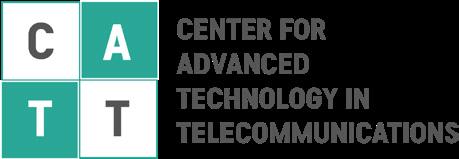



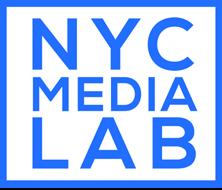
5 CENTER FOR CYBERSECURITY NYU WIRELESS CENTERS AND INSTITUTES

1 Metrotech Center Brooklyn, NY 11201 engineering.nyu.edu | #NYUTandonMade

 The Dibner Building, home to the Bern Dibner Library of Science & Technology and Pfizer Auditorium, among many other resources.
The Dibner Building, home to the Bern Dibner Library of Science & Technology and Pfizer Auditorium, among many other resources.




































































 Tandon researchers are part of the FloodNet consortium deploying ultrasonic sensors in low-lying NYC areas prone to hyperlocal flooding.
Miguel Modestino
Tandon researchers are part of the FloodNet consortium deploying ultrasonic sensors in low-lying NYC areas prone to hyperlocal flooding.
Miguel Modestino














































 6 MetroTech houses the interconnected Rogers Hall and Jacobs Academic Building, home to classrooms, research labs, academic offices, a state-of-the-art 10,000 sq foot prototyping MakerSpace, a nanofabrication cleanroom, and more.
6 MetroTech houses the interconnected Rogers Hall and Jacobs Academic Building, home to classrooms, research labs, academic offices, a state-of-the-art 10,000 sq foot prototyping MakerSpace, a nanofabrication cleanroom, and more.












